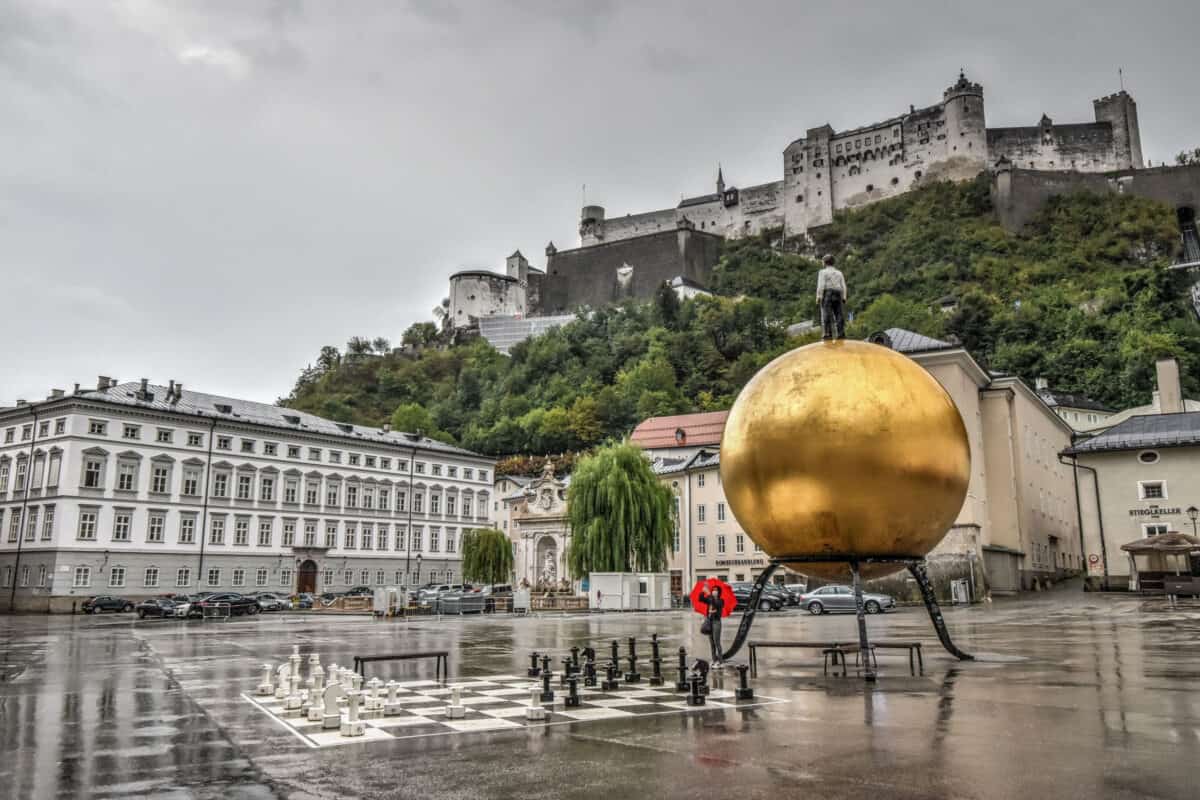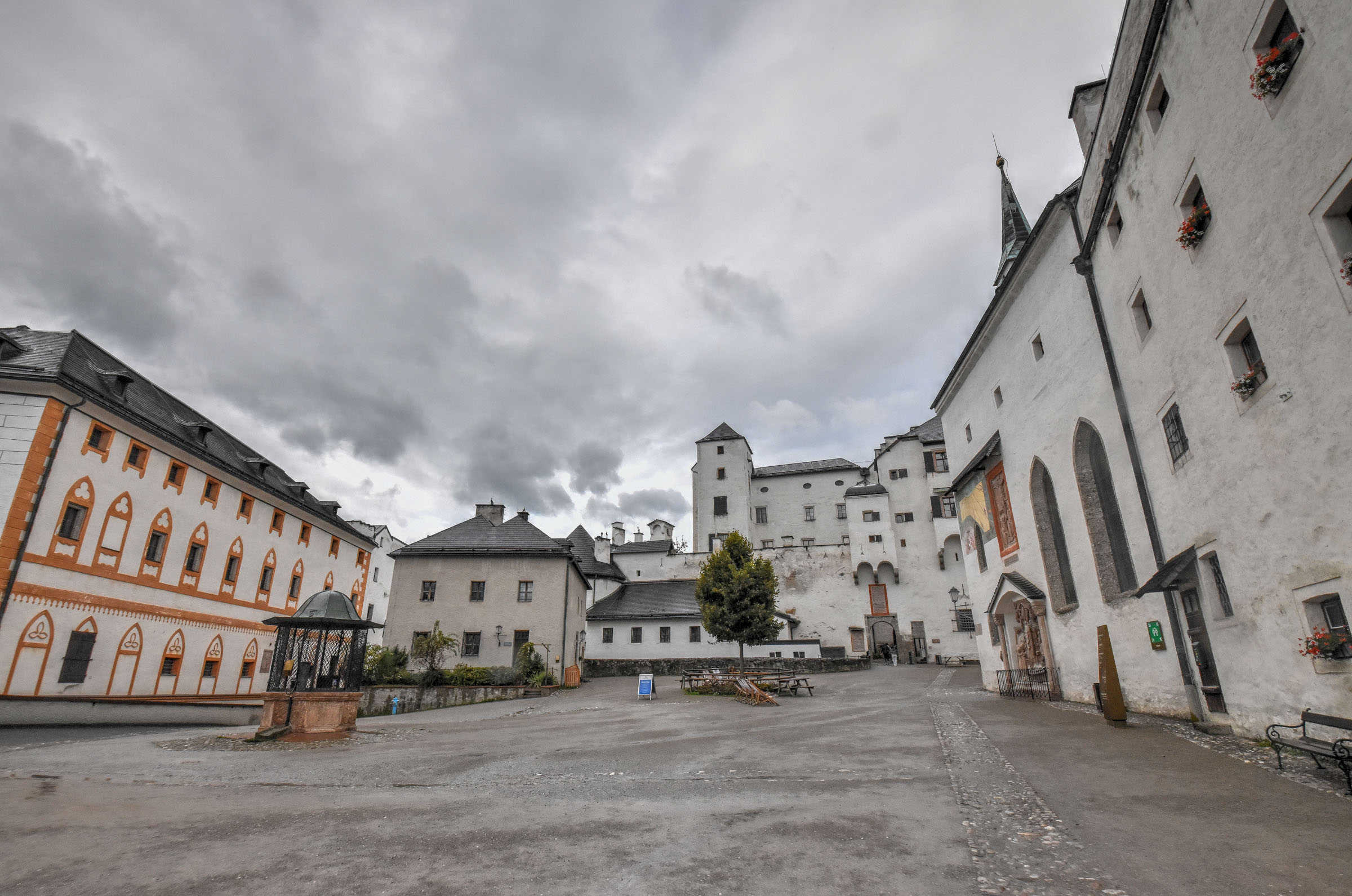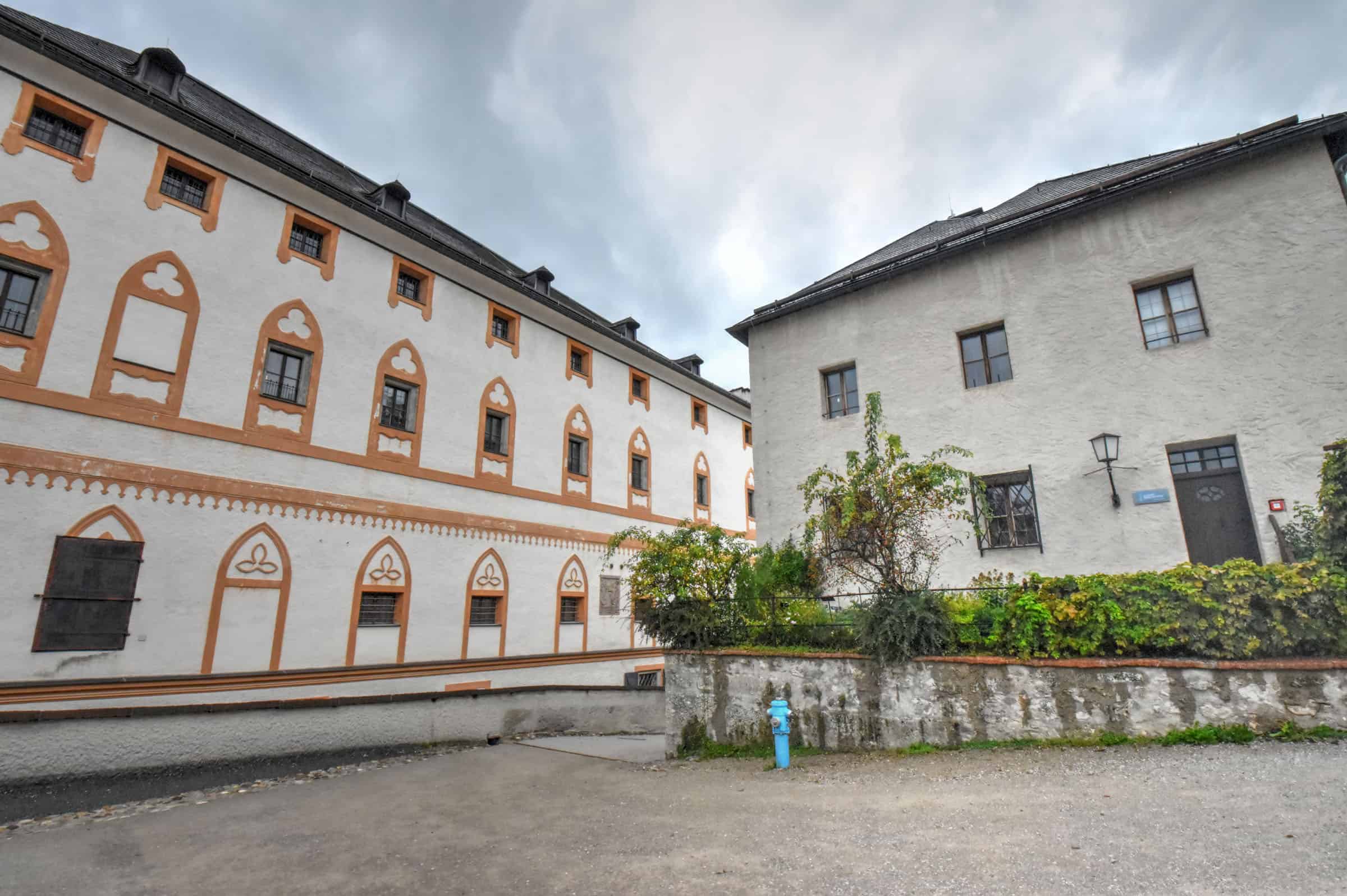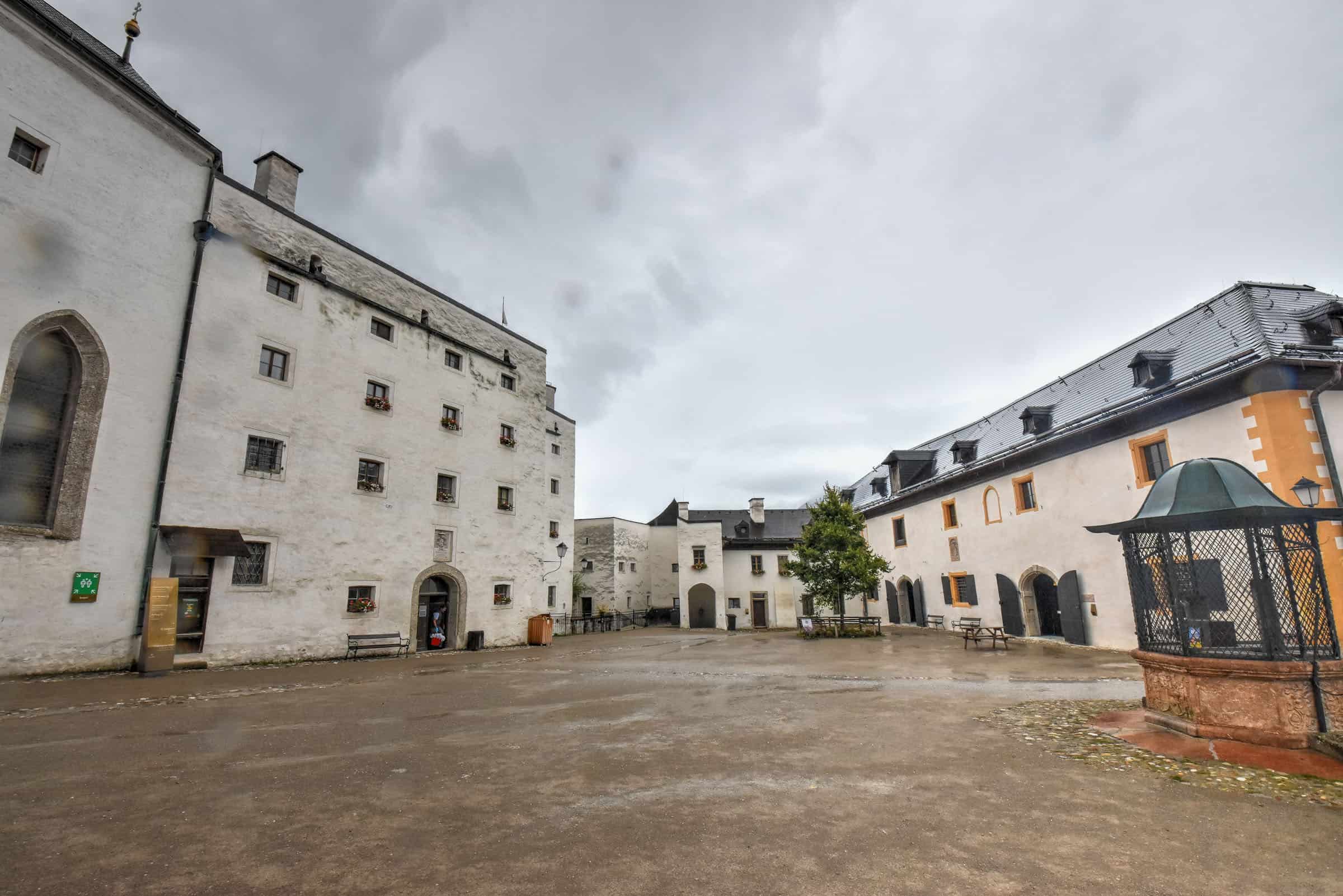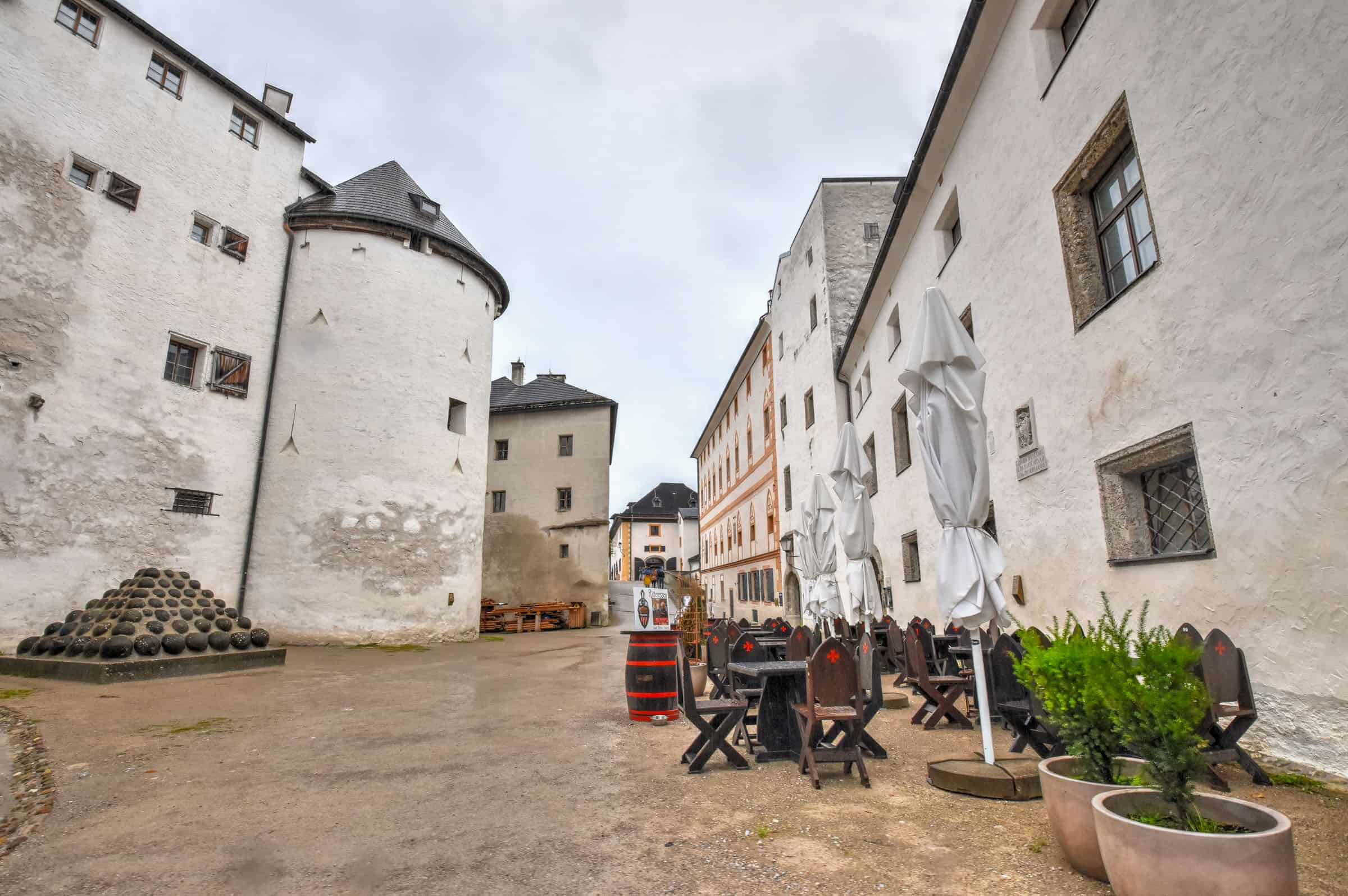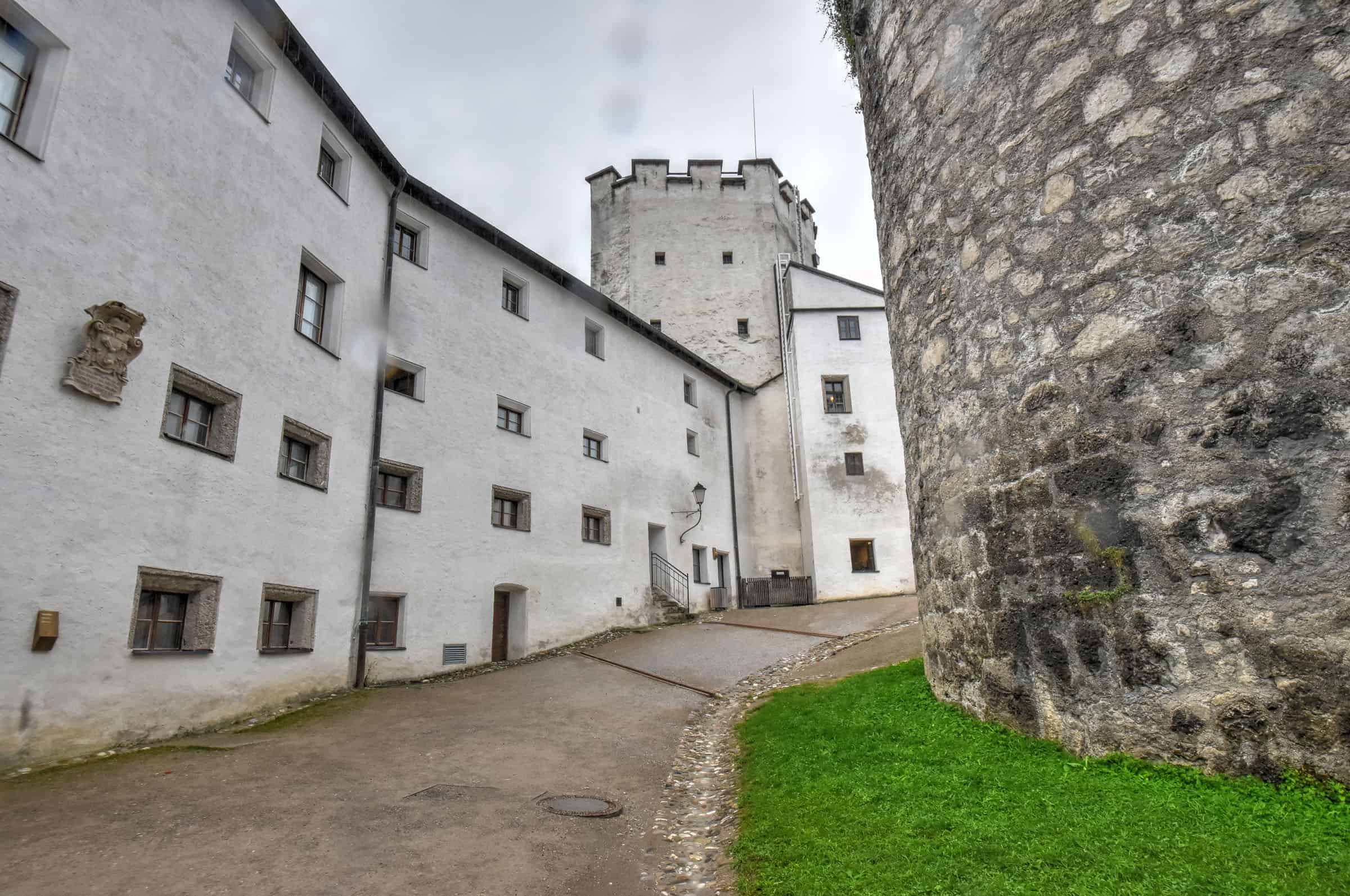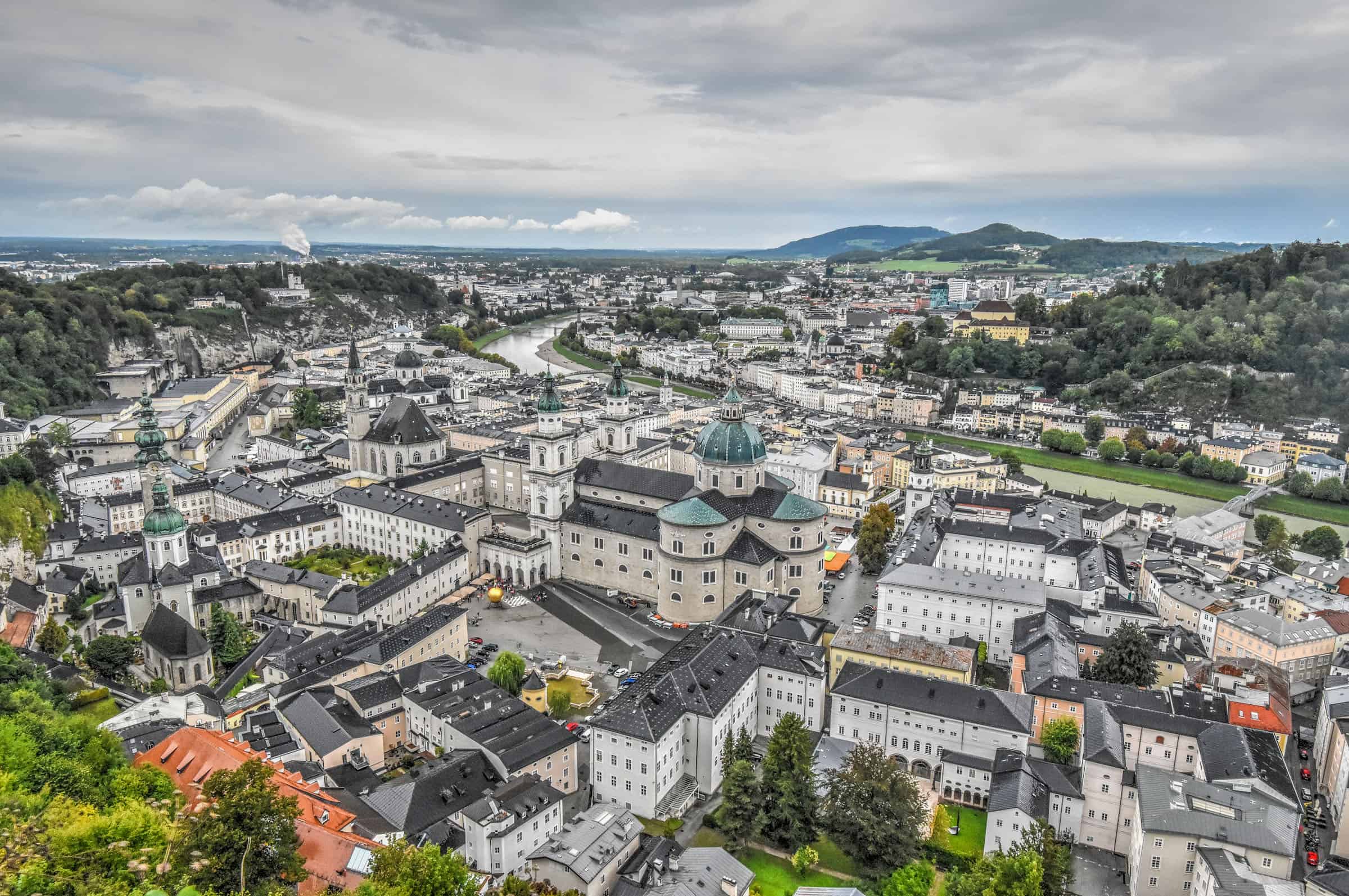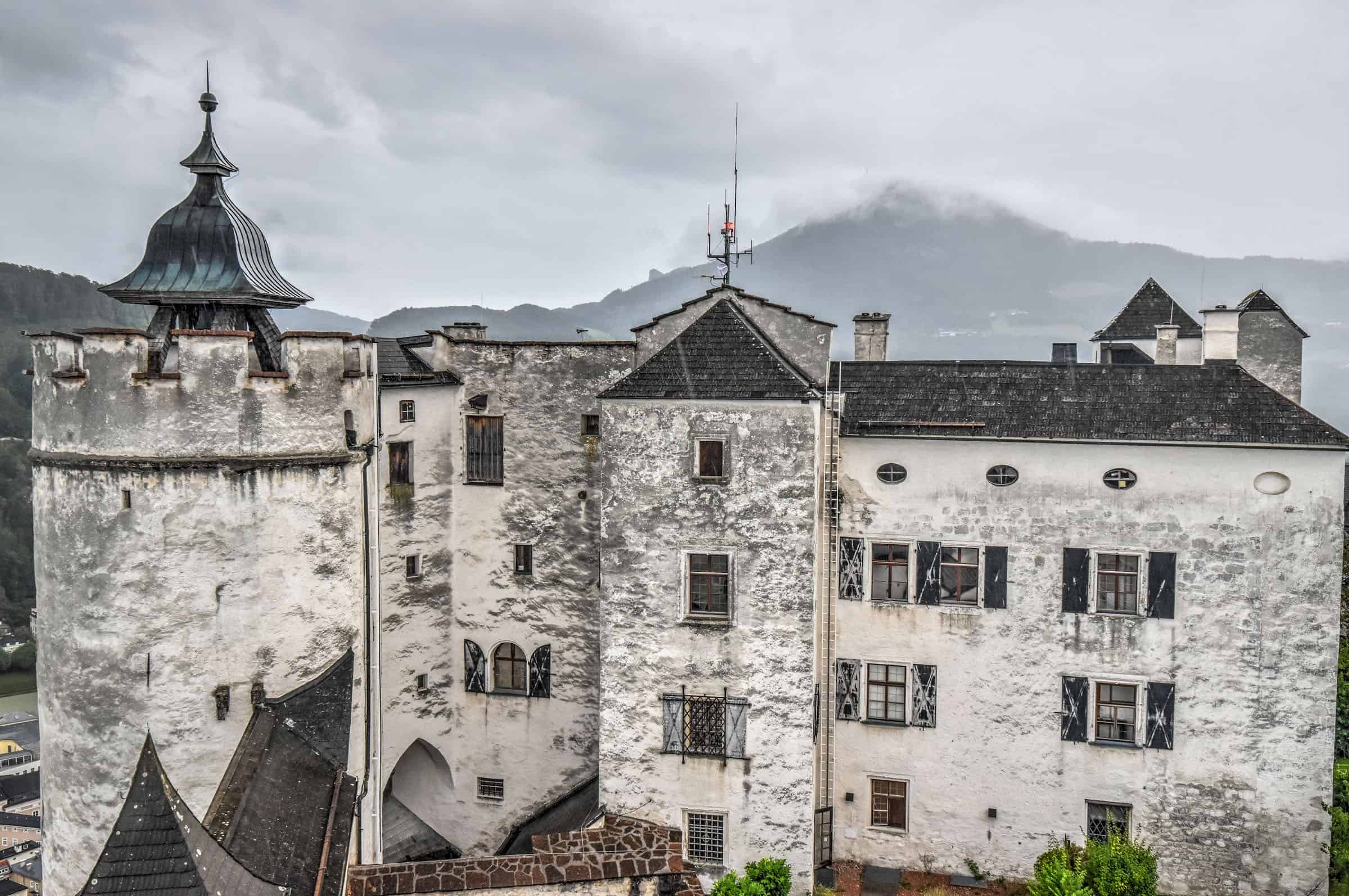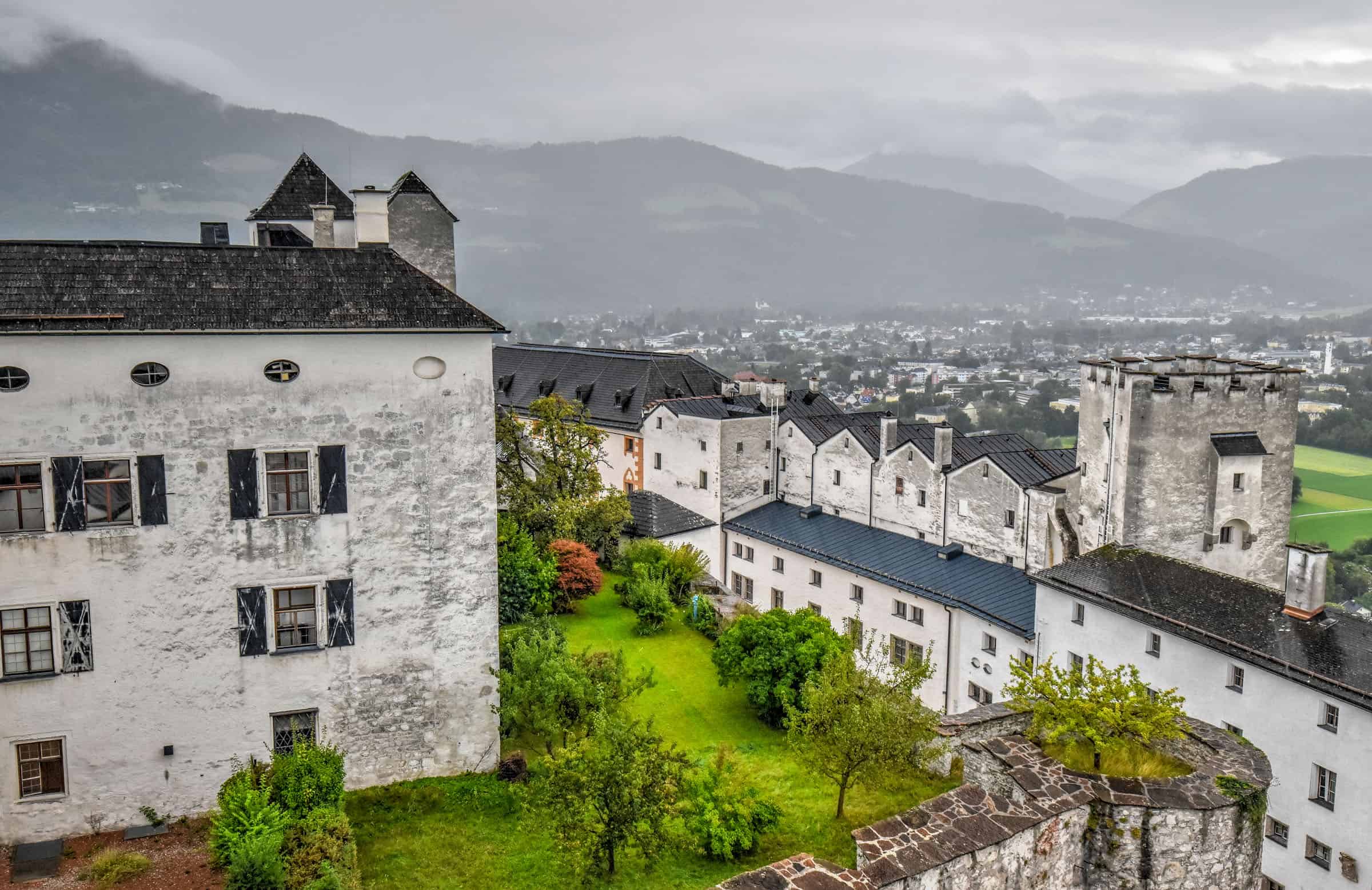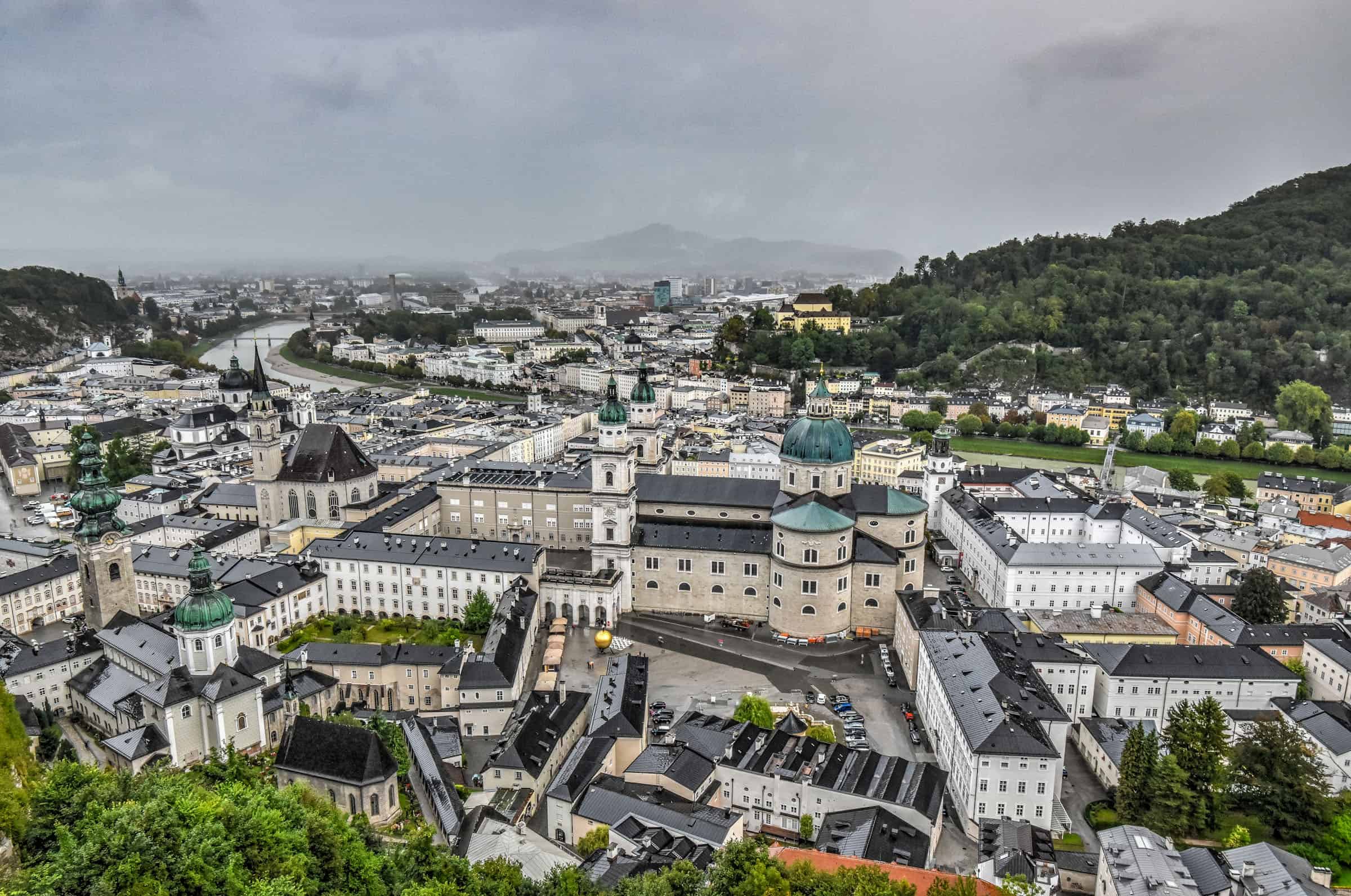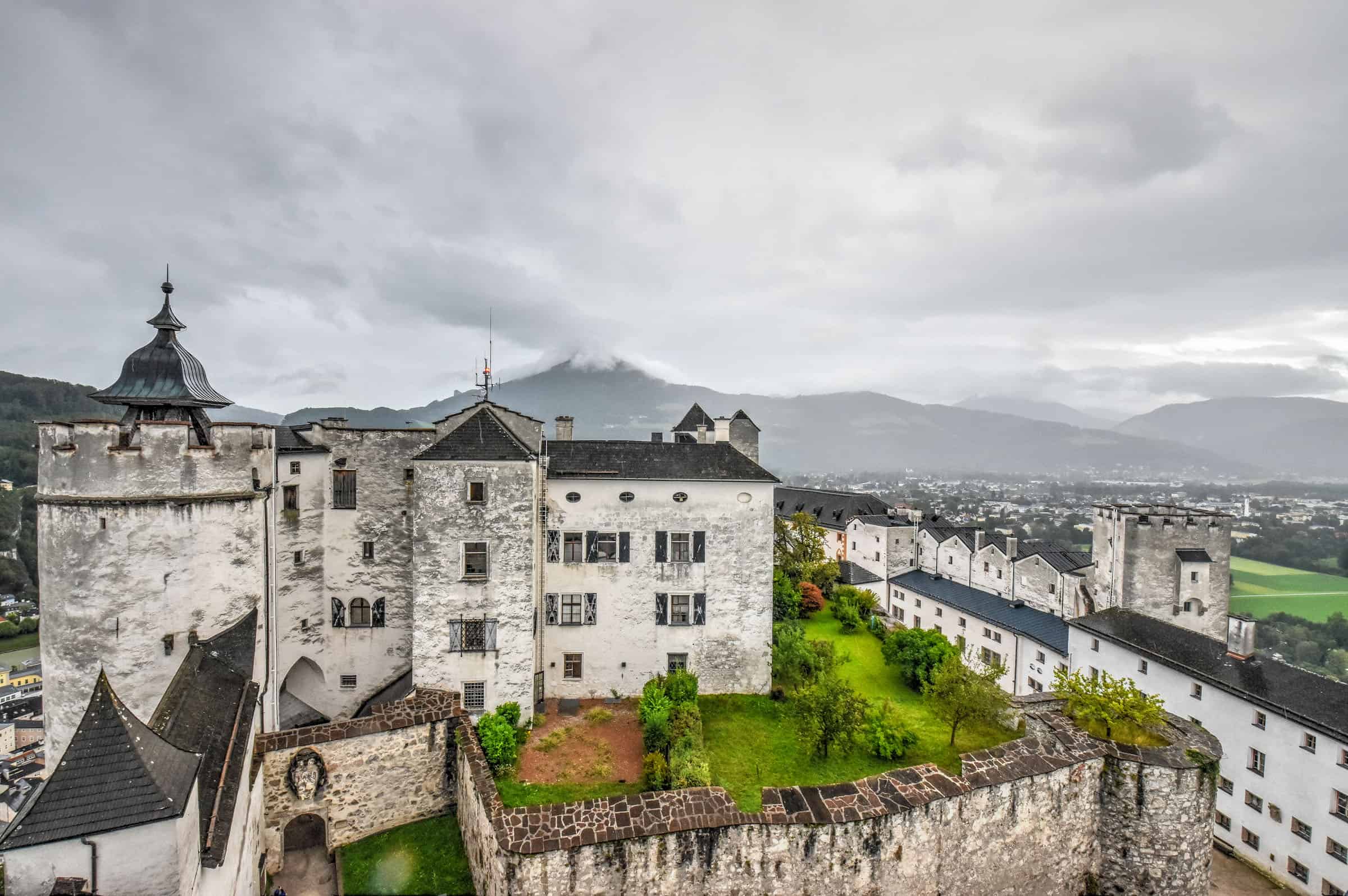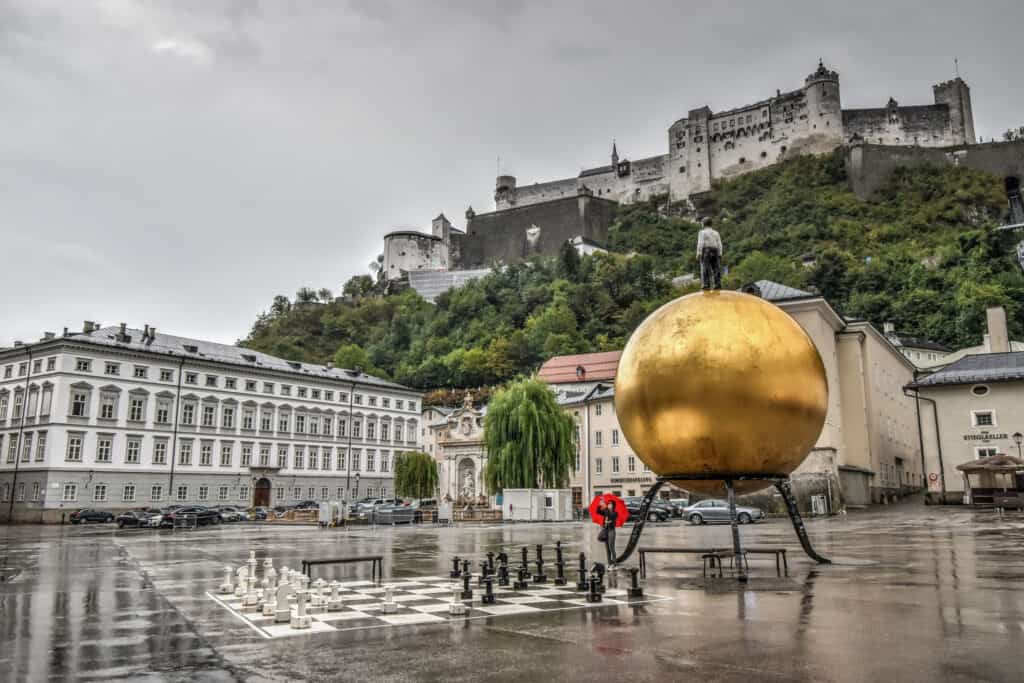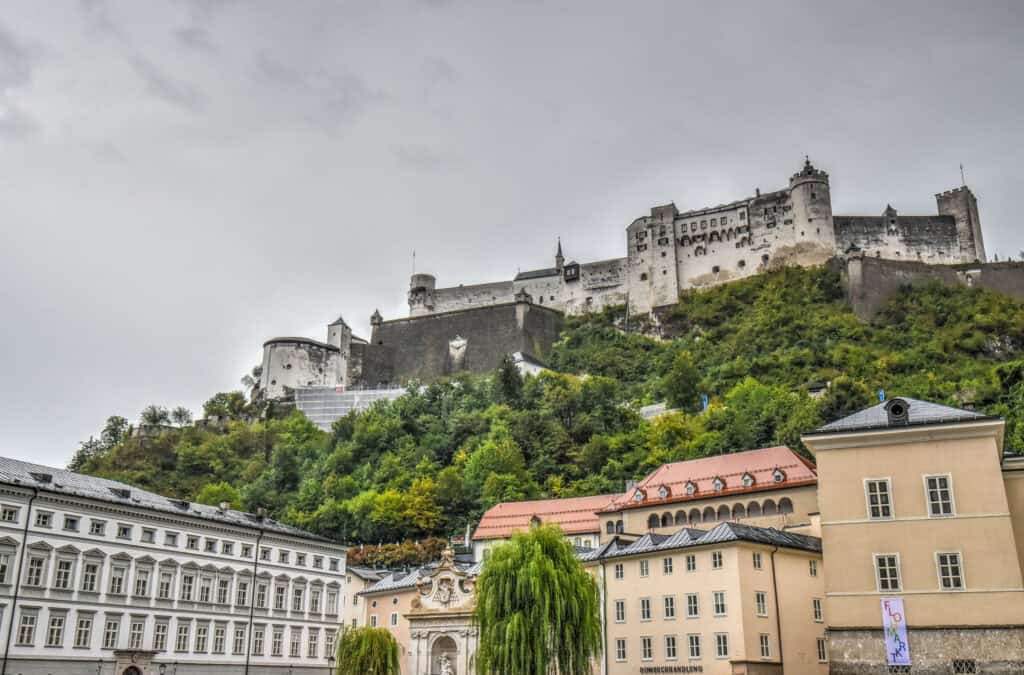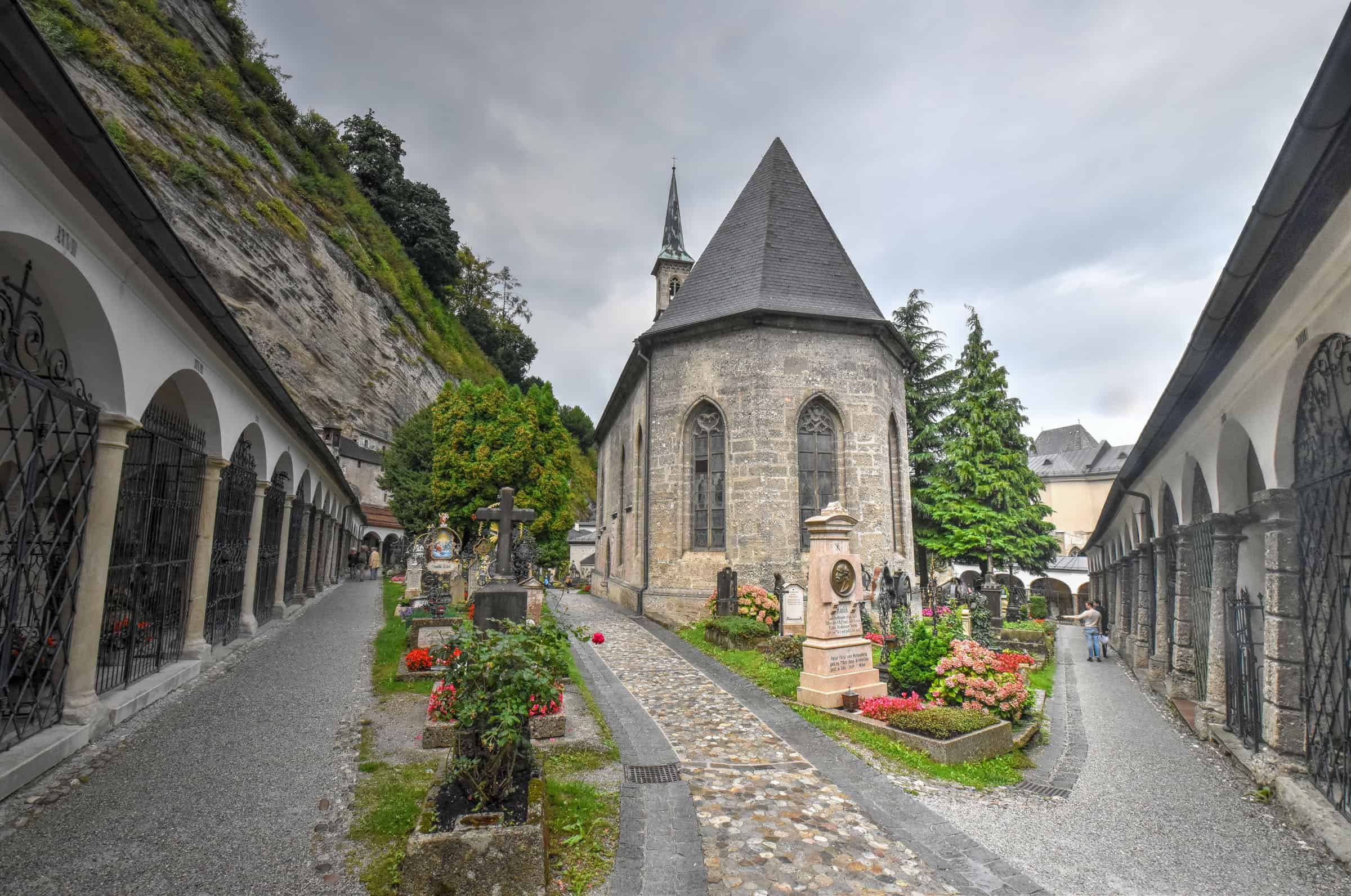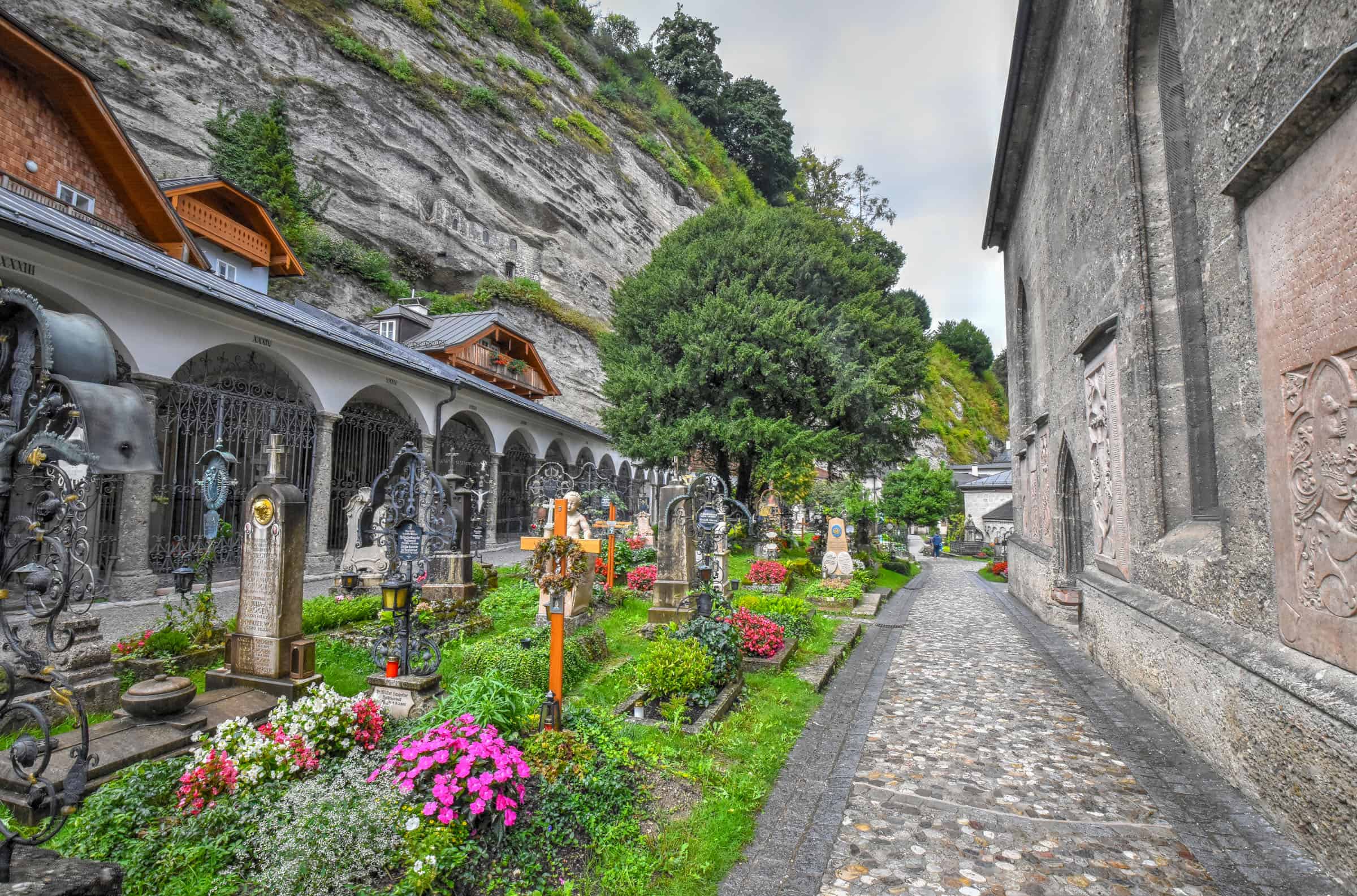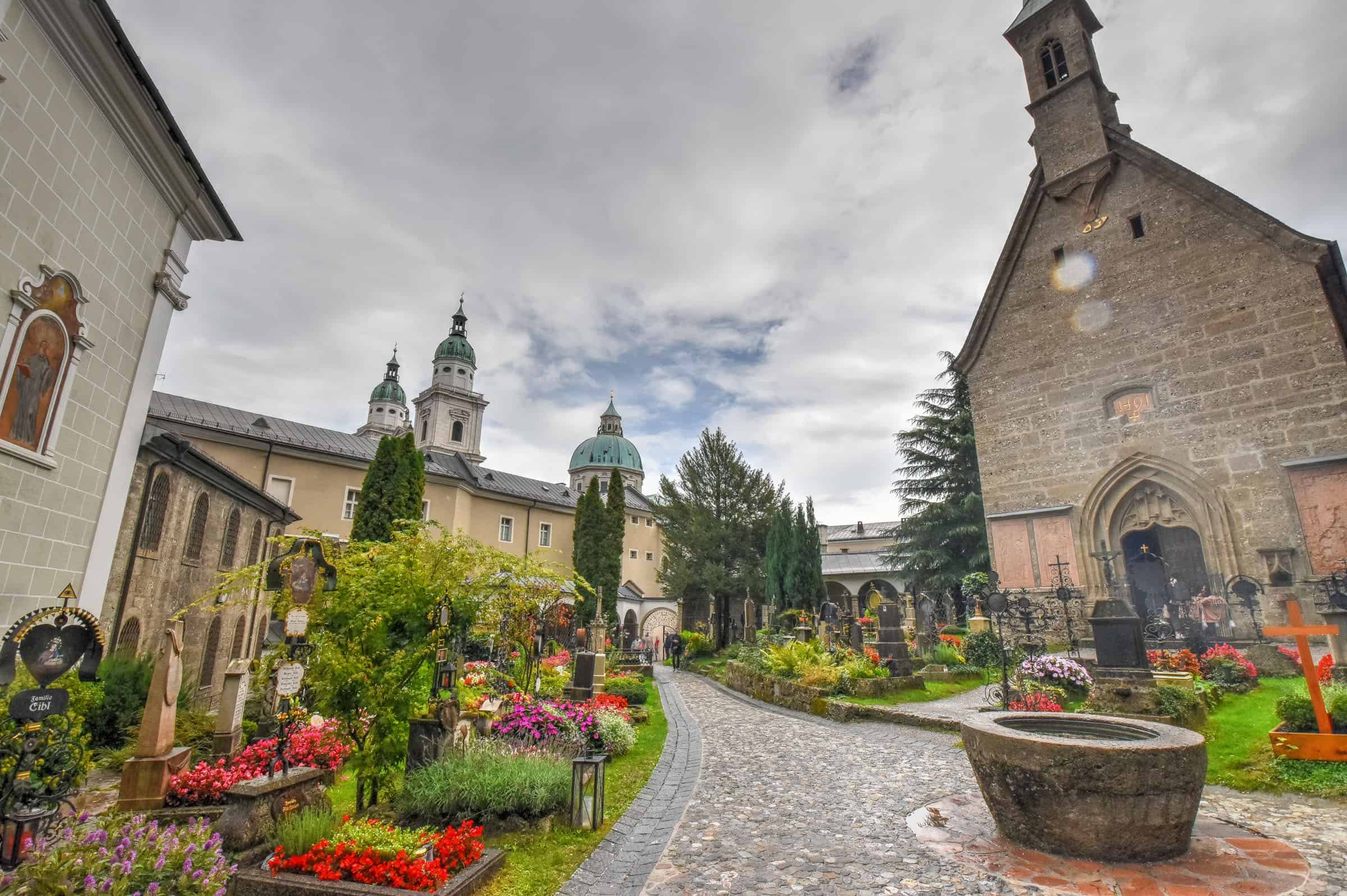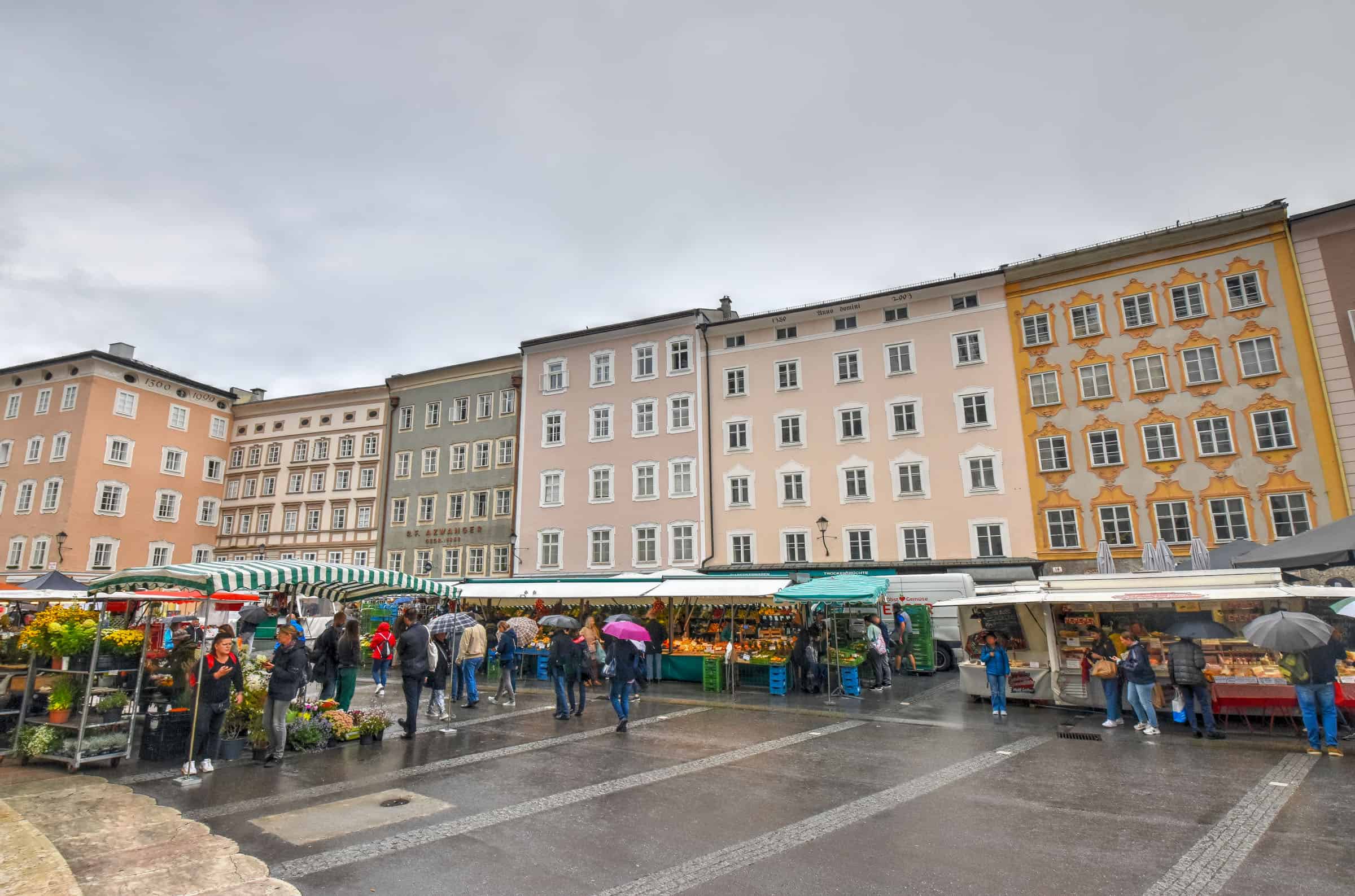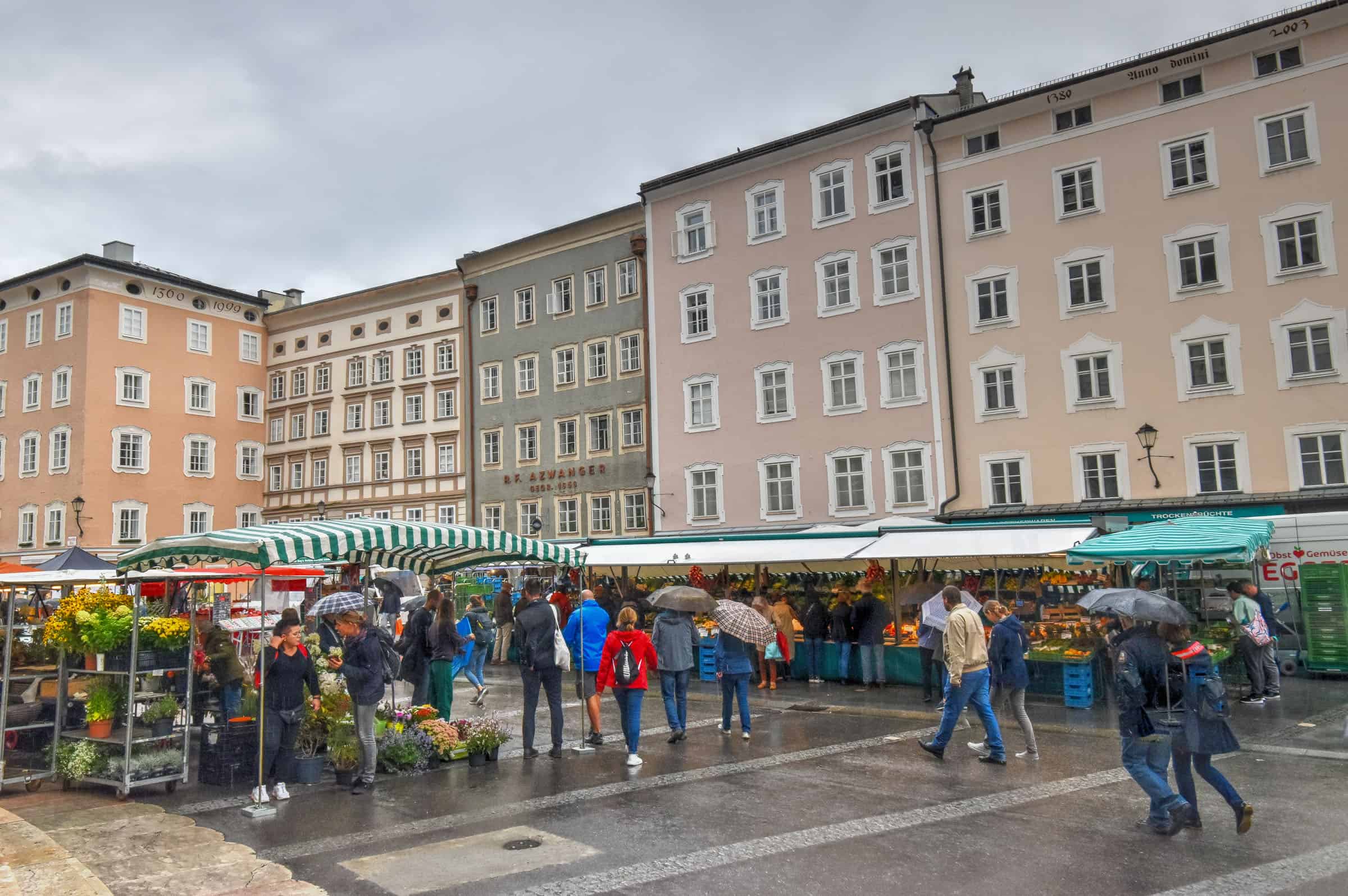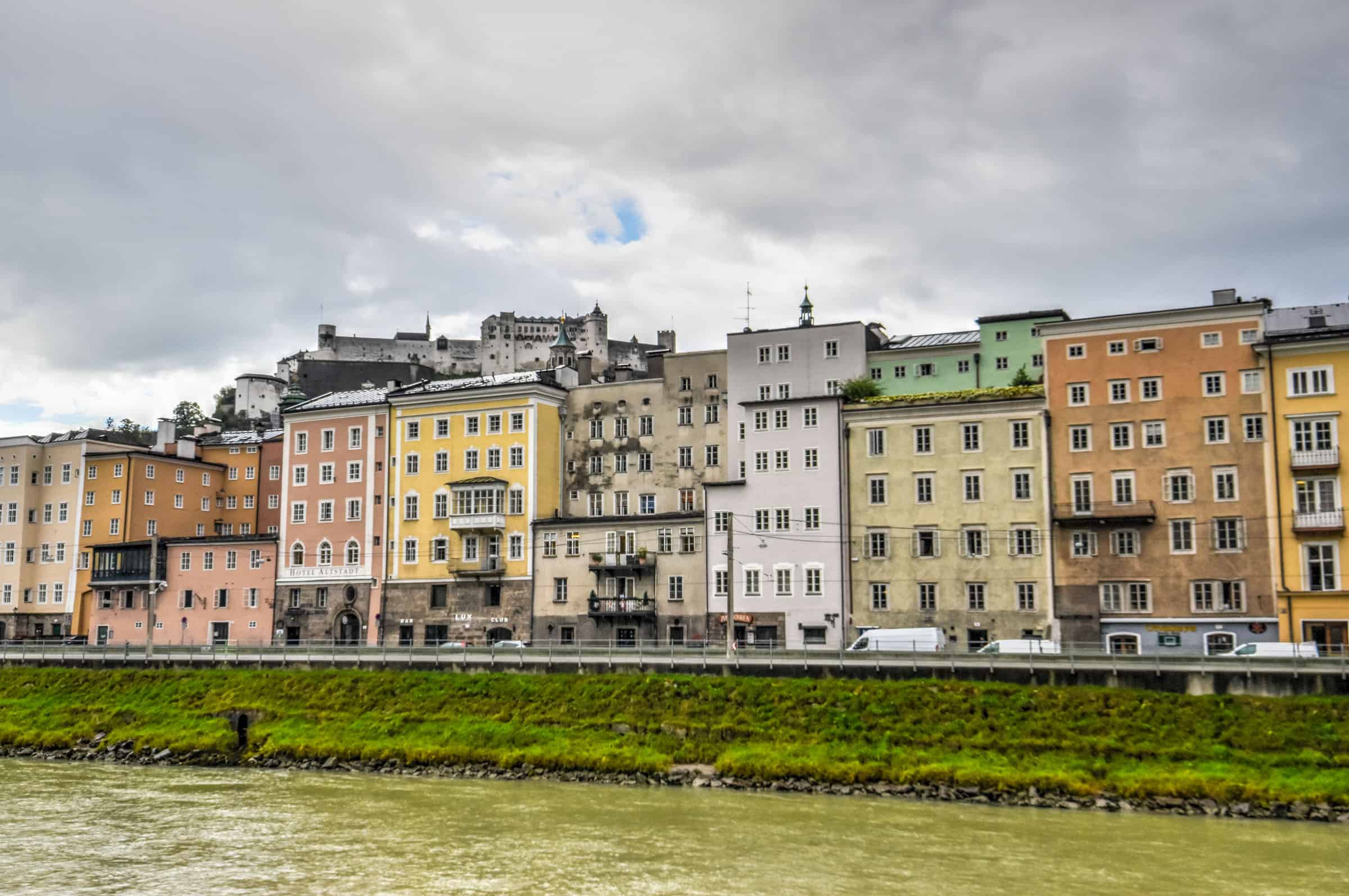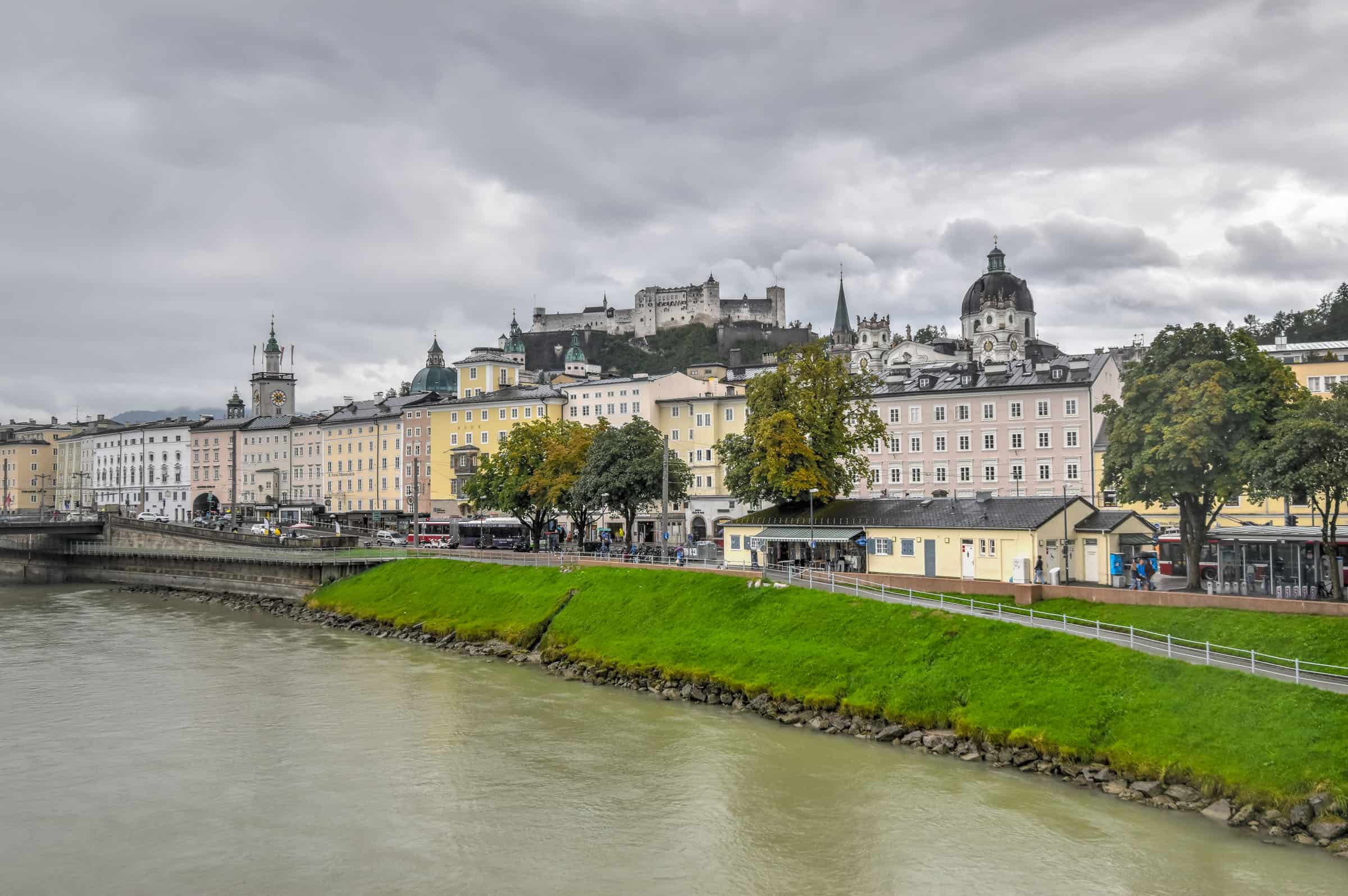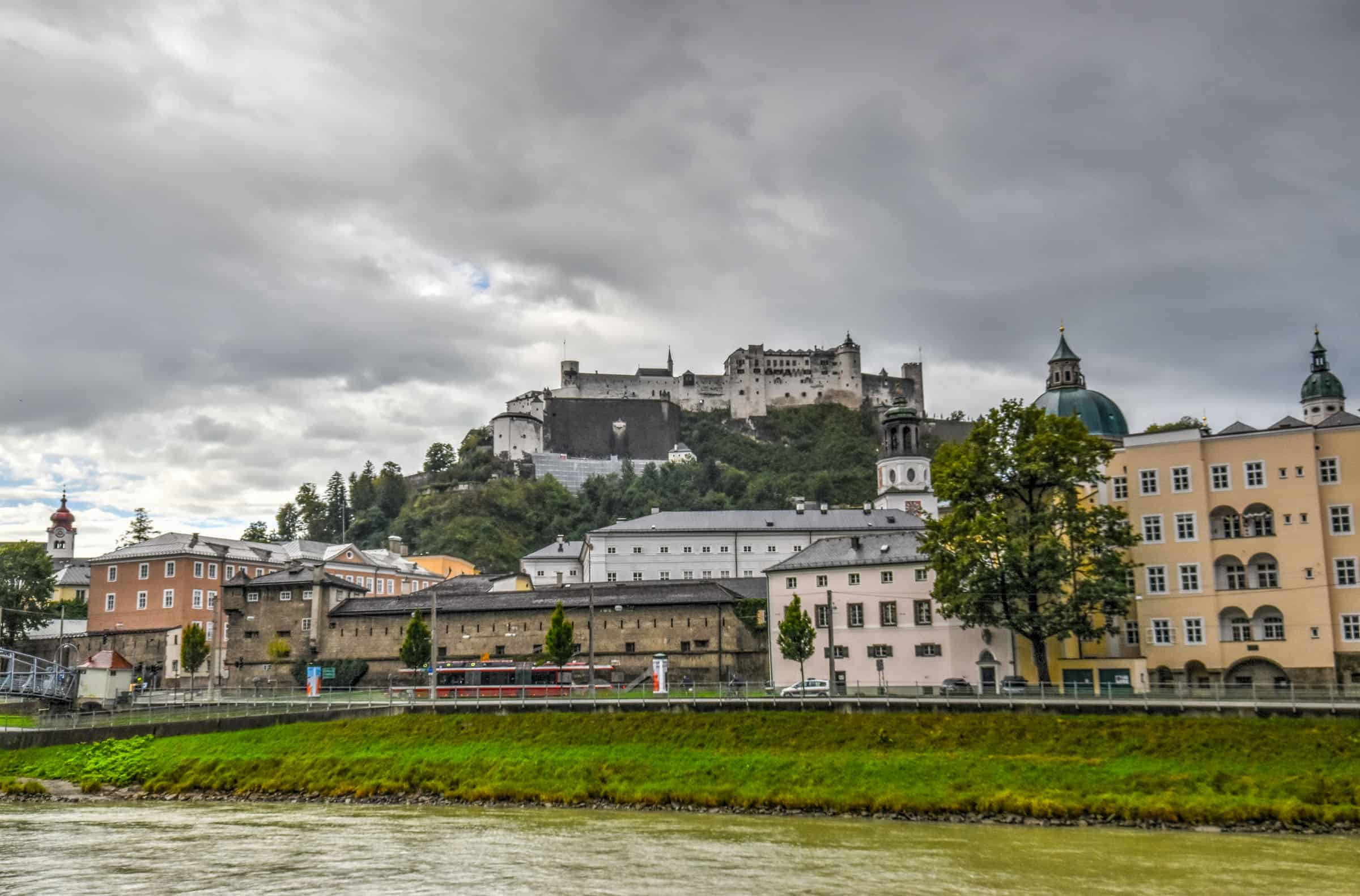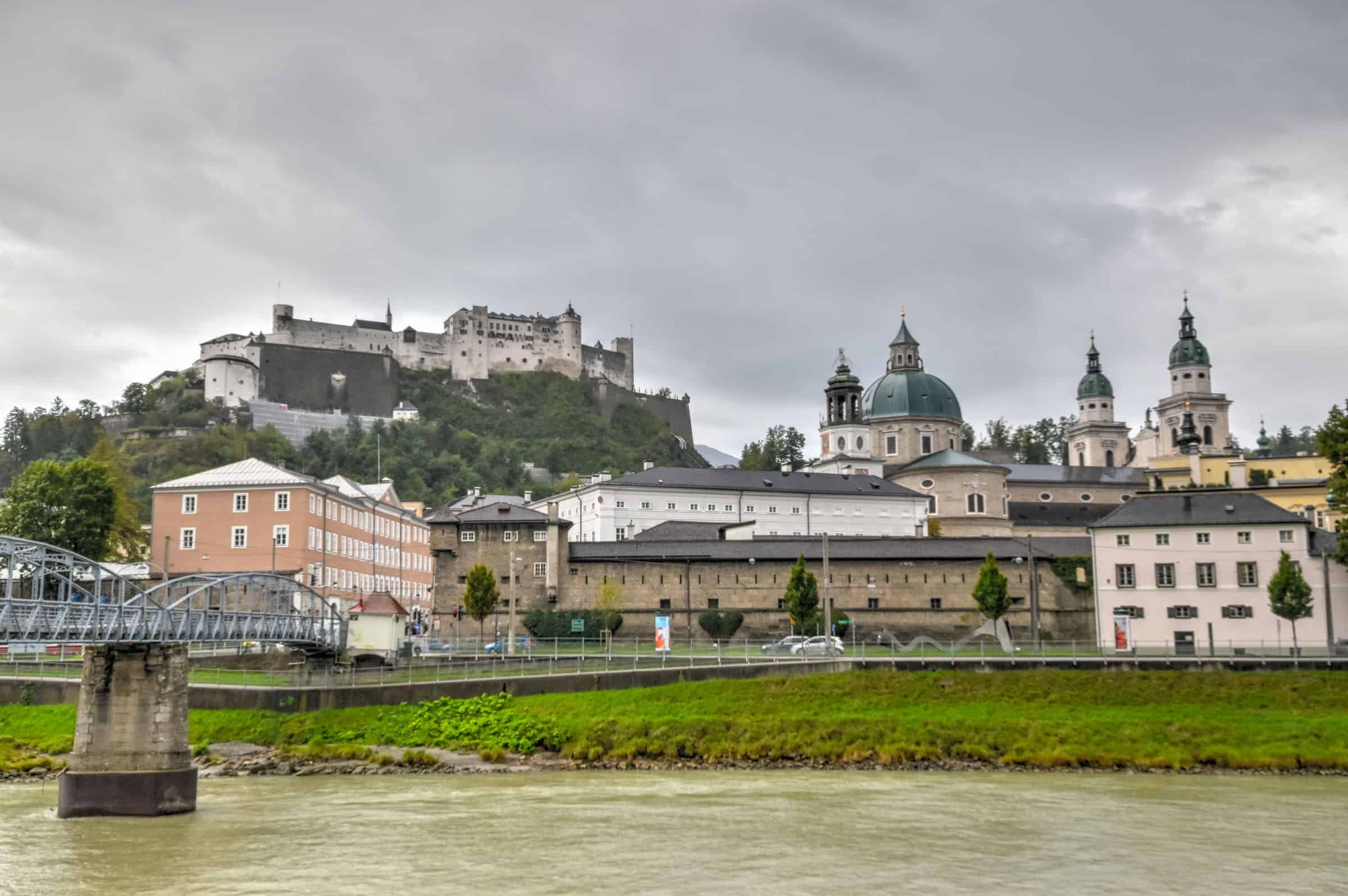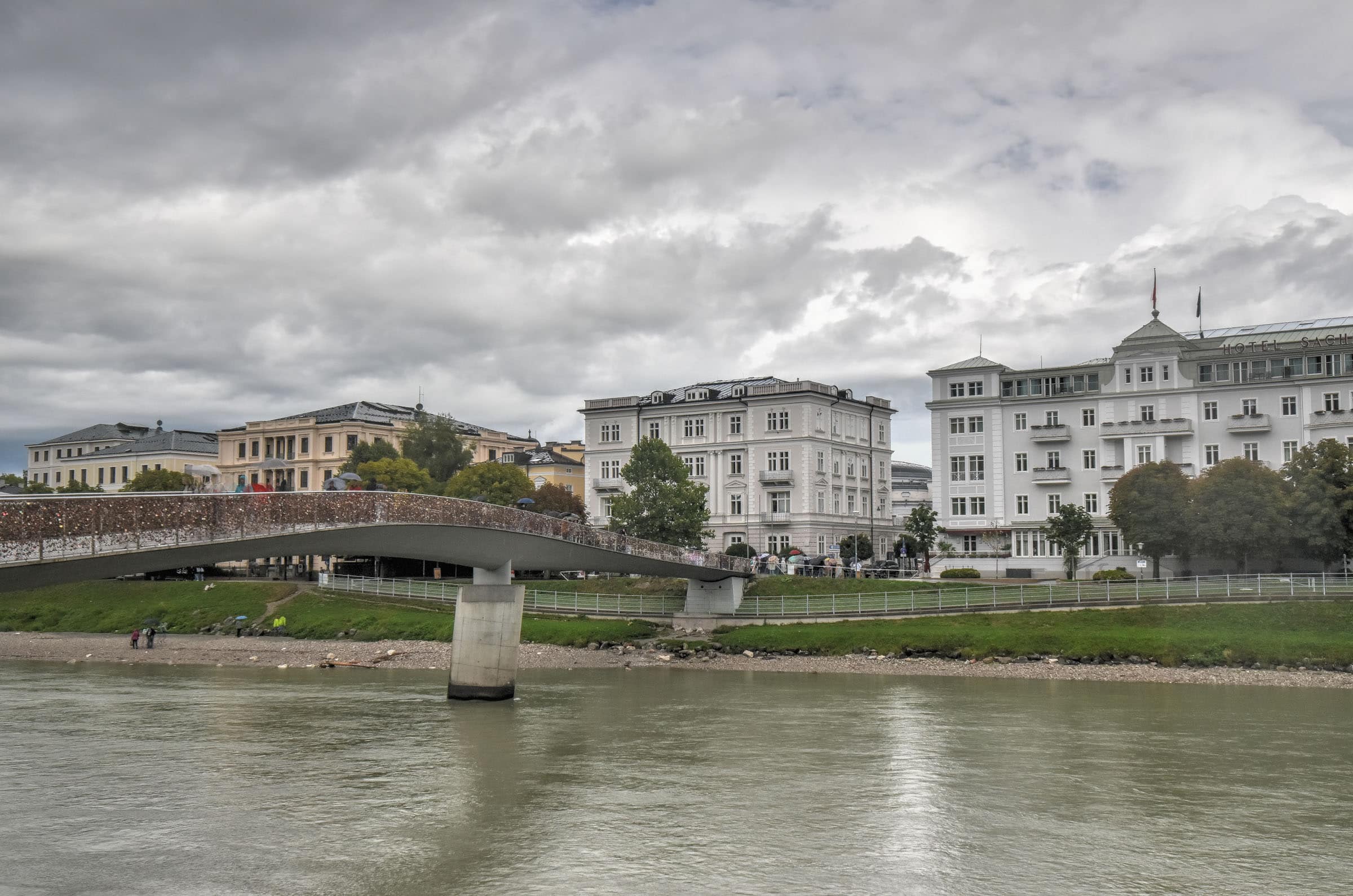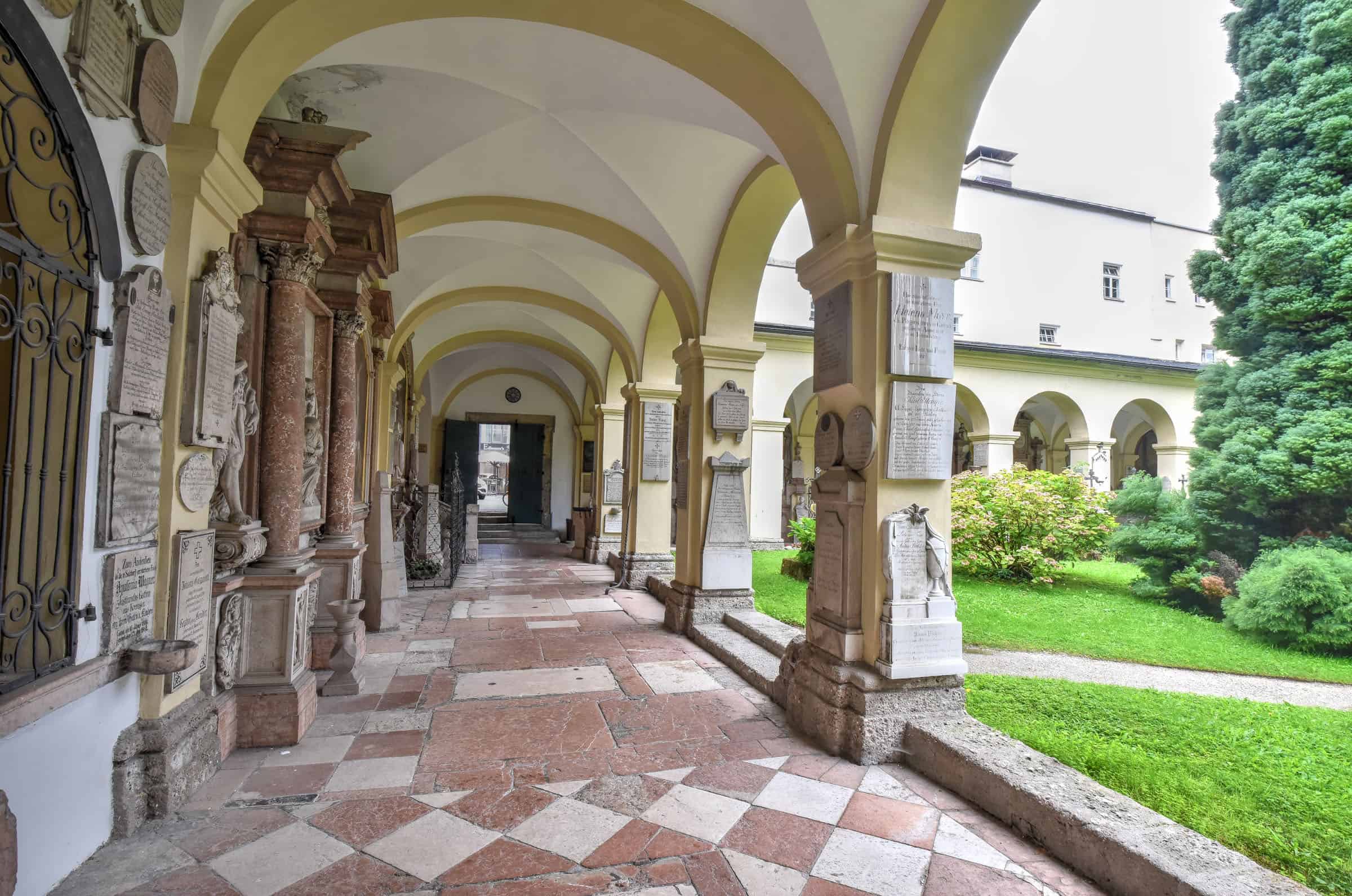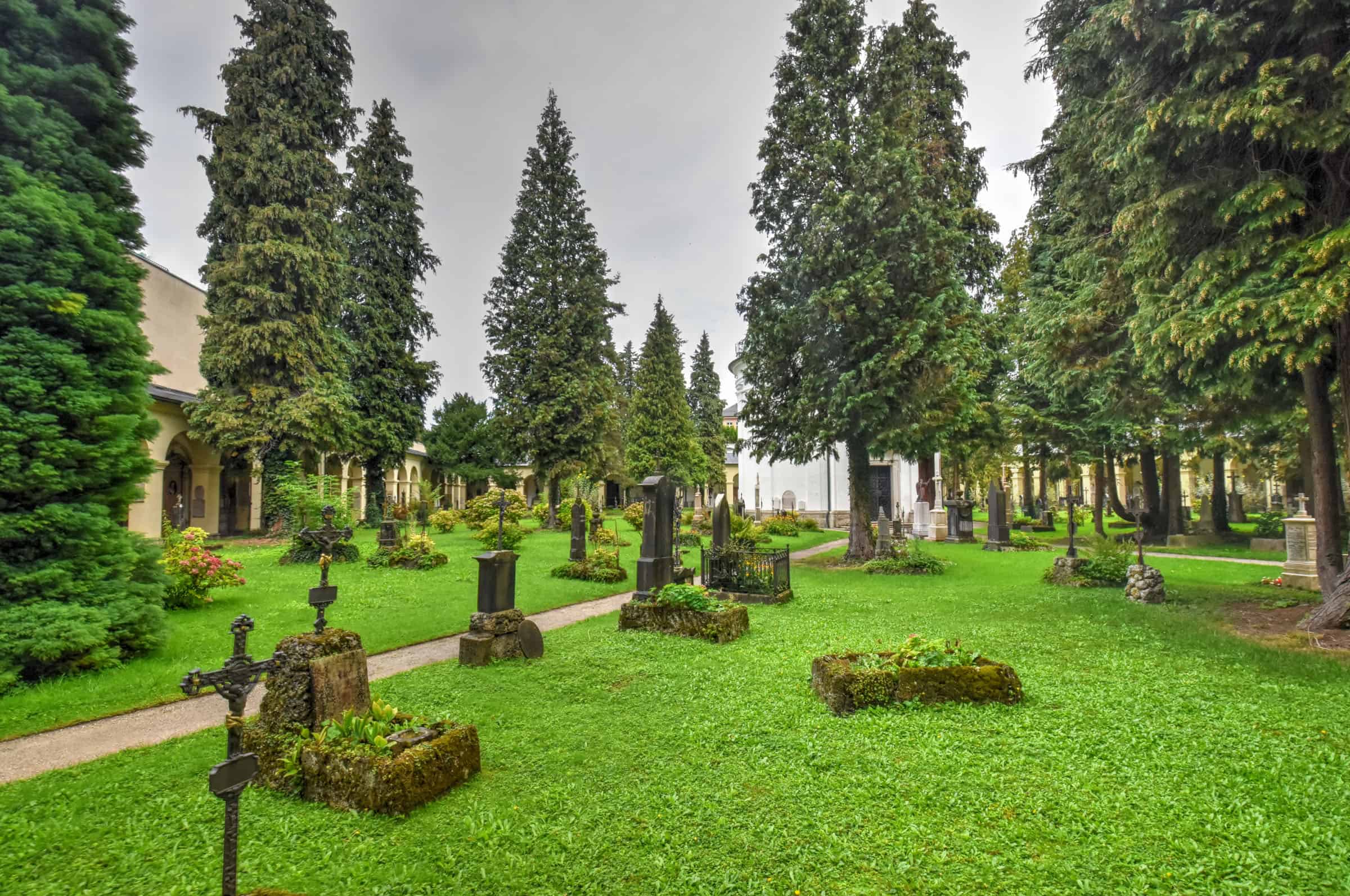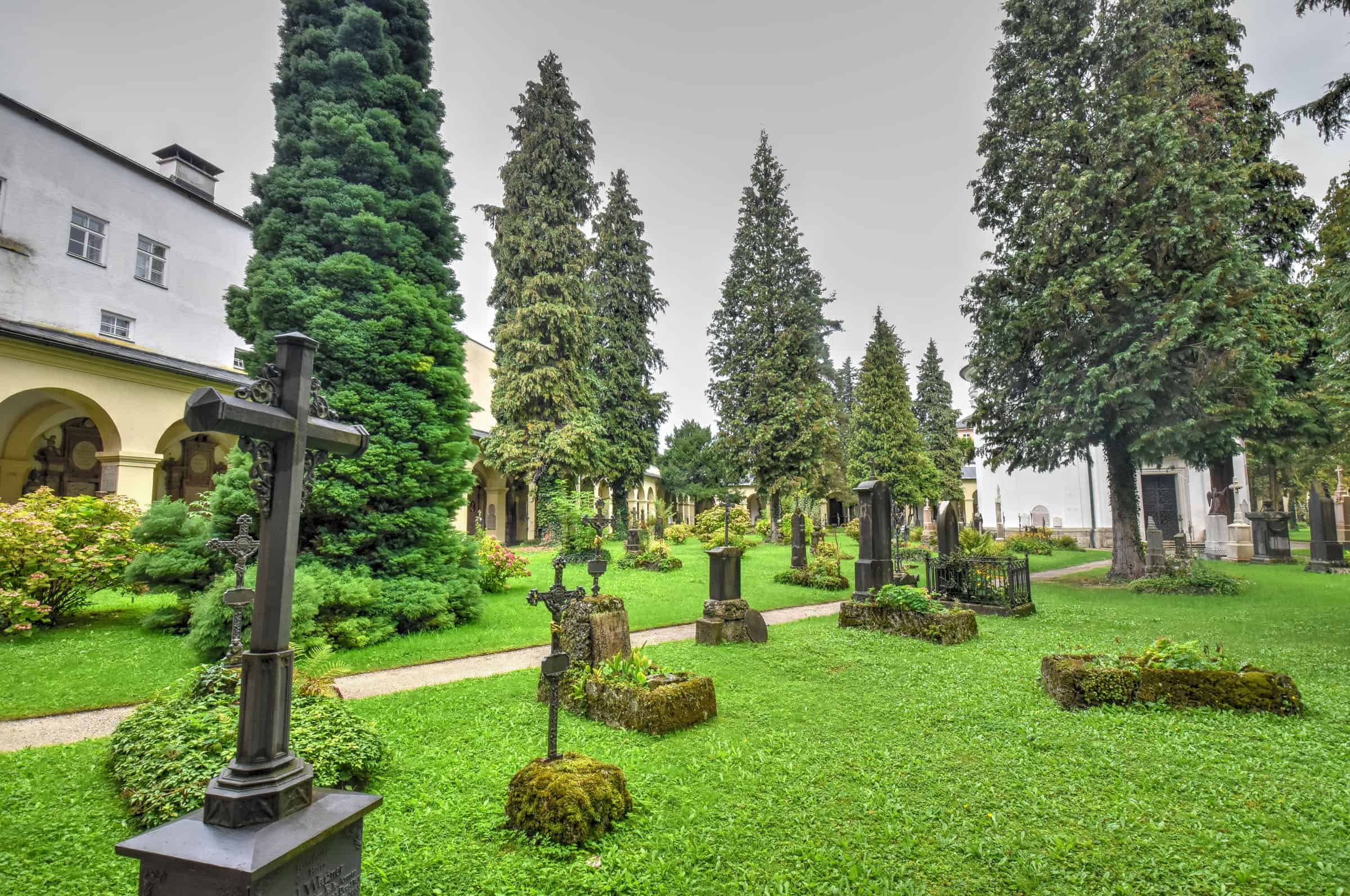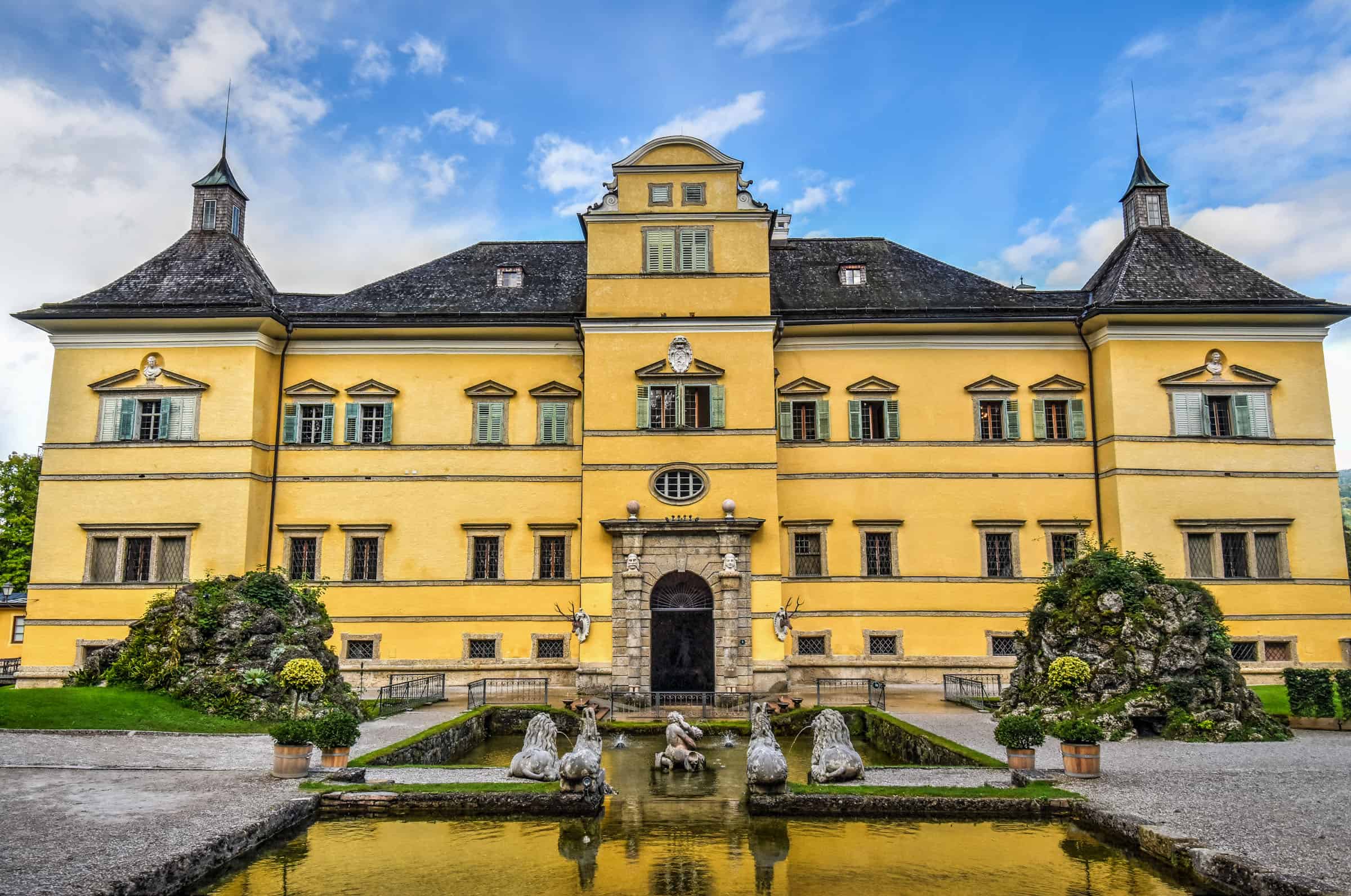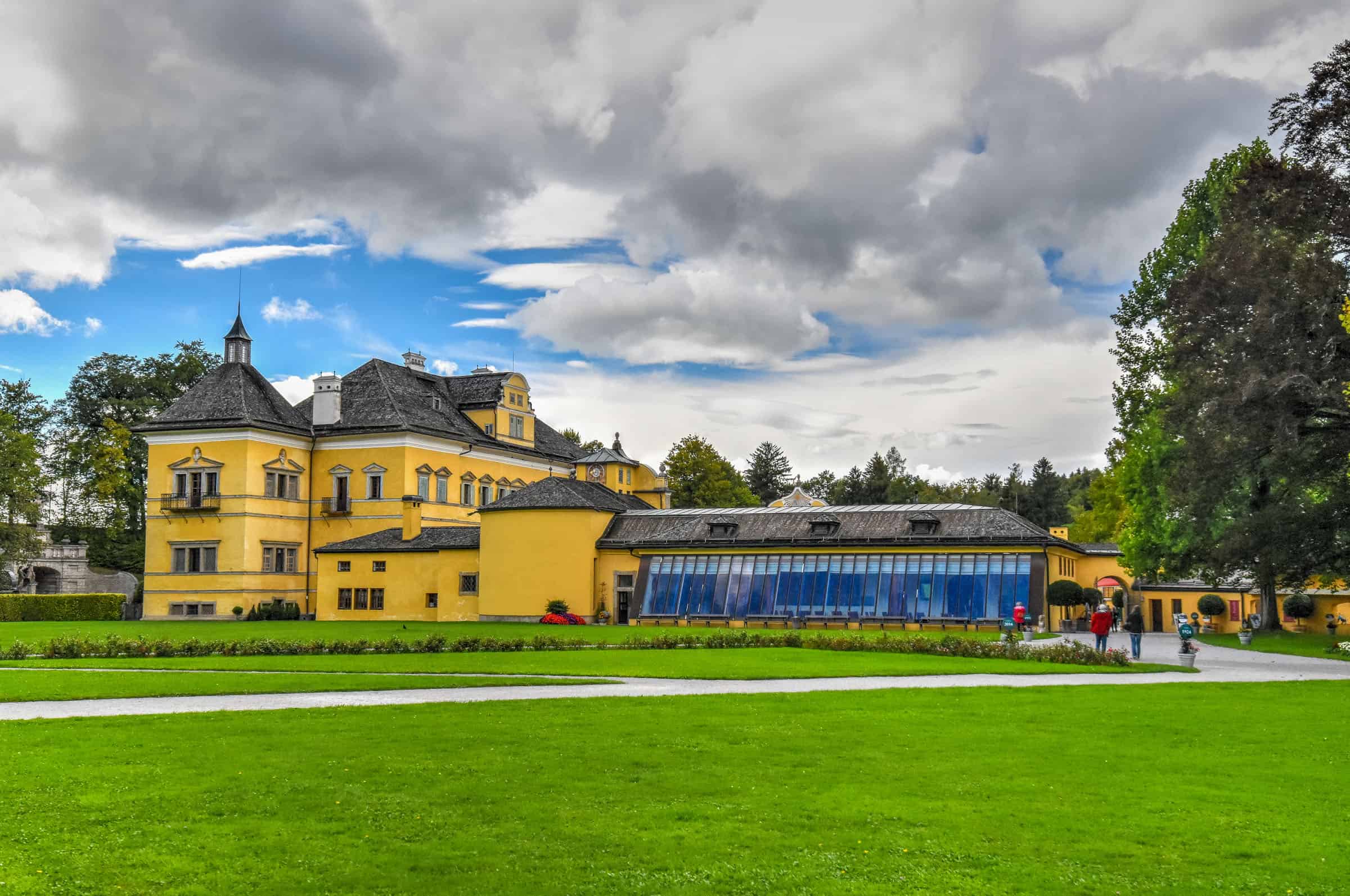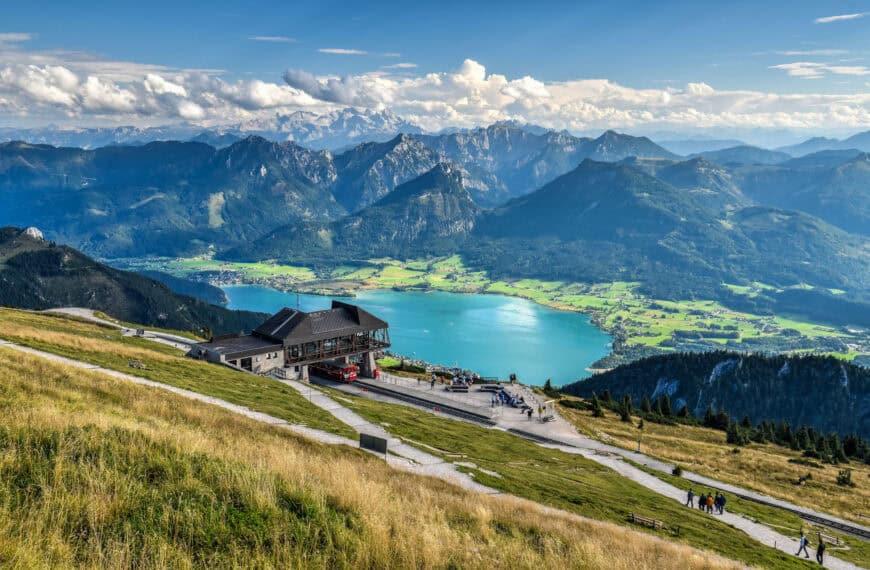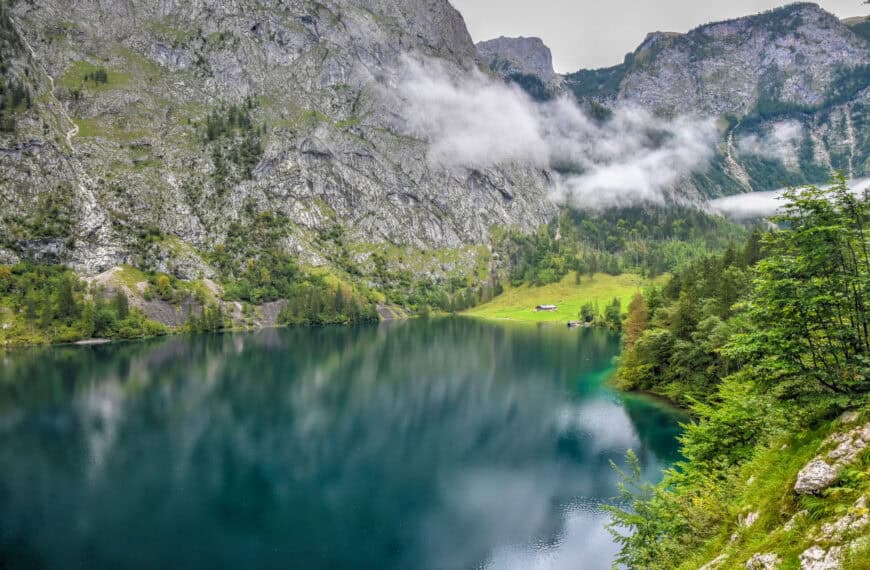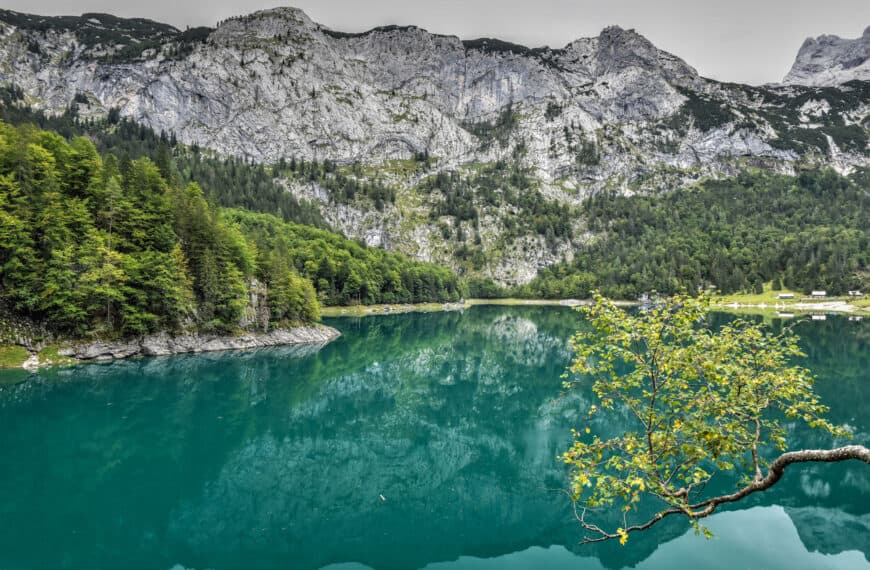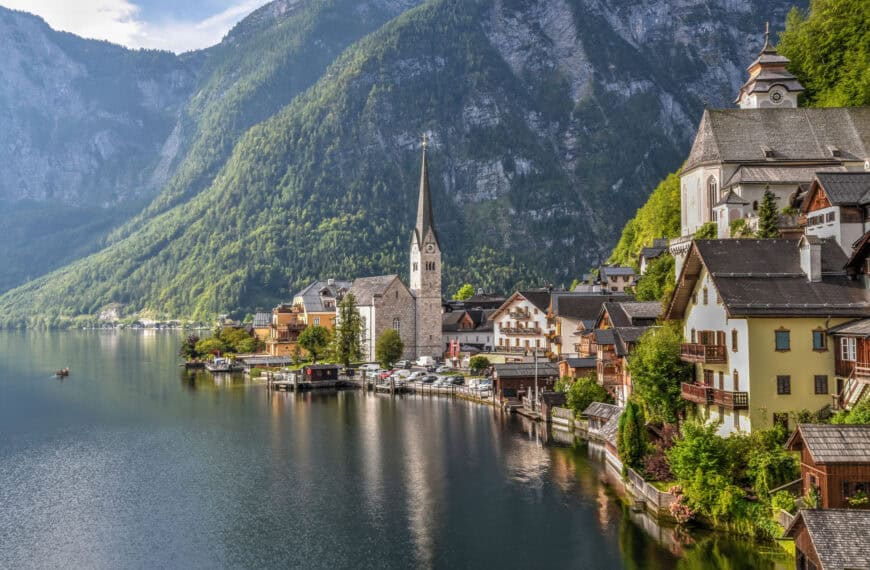Tucked away between scenic alpine landscapes near the German border, Salzburg is truly a vibrant Austrian city that deserves to be discovered. UNESCO-listed since 1997, the city has what many think is the best-preserved Baroque Altstadt (old town) and one of Europe’s best-preserved medieval castles towering above it. From the Sound of Music to Mozart’s childhood, the city has a rich cultural history and plenty of stories to share. Salzburg is also the gateway to Austria’s stunning Salzkammergut lake region and is a short drive from Germany’s beautiful Königssee and Berchtesgaden National Park. To help you plan the perfect visit, we put together this travel guide on the Best Things to See and Do in Salzburg.
Disclosure: This page (Best Things to See and Do in Salzburg) may contain product affiliate links. At no additional cost to you, we may receive a commission for purchases made through these links. More details can be found on our disclosure and policies page.
You might also be interested in these pages:
Best Things to See and Do in the Salzkammergut
Perfect Road Trip Itinerary in the Salzkammergut
Best Things to See and Do in Hallstatt








Orientation – Salzburg Location
Salzburg is located in western-central Austria, near the border with Germany and Berchtesgaden National Park on the other side. It also lies just west of the Slazkammergut, Austria’s famed lake district, where you’ll find popular lakeside towns such as Hallstatt and St Wolfgang.

There are many ways to reach Salzburg as it is well connected with many other European cities. Long-distance ground-level travel to Salzburg is generally more time-efficient by train (and can be more cost-efficient if travelling solo), but having a car can be more practical if you plan to visit some of the countryside and alpine regions around Salzburg.
By Car: Munich to Salzburg typically takes close to 1h45 (144 km). Innsbruck to Salzburg requires 2h20 (190km). Vienna to Salzburg is about 3h15 (300 km). Cesky Krumlov is about 2h45 (200 km) from Salzburg and Ljubljana is about 3h25 (275 km) from Salzburg.
If you need to book a rental vehicle for your travels, we highly recommend using Discover Cars to get the best rates on your rental in Austria or Germany.
We also highly recommend Airalo (eSIM card) for your connectivity needs when travelling abroad. Airalo is the world’s first and largest eSIM store with eSIM plans for 200+ countries and regions worldwide.
Important: All Austrian motorways (“Autobahn”) and expressways (“S” roads) are subject to tolls. All cars, motorbikes and camper vans must either properly display a toll sticker or have purchased online in time a digital vignette when they drive onto a motorway or expressway. Vignettes with periods of validity of 10 days, 2 months or 1 year are available from more than 6,000 outlets in Austria and neighbouring countries, and digital vignettes can be purchased from the ASFINAG website. They are not prohibitively expensive, for instance, the 10-day vignette for cars costs € 11,50.
Arrival by Car and Parking:
Several are several car parks scattered across Salzburg and around Salzburg. All parking areas in downtown Salzburg are short-term parking zones – for prolonged stays it is recommended to use one of four Park + Ride car parks located outside the city center. The P +R combo ticket for € 15 (2024 price) includes the parking fee (valid for 24 hours) as well as an all-day pass for use of the entire public transit system for up to five people.
Most short-term parking zones in Salzburg are limited to between 9 am and 7 pm and weekdays and 9 am to 6 pm on Saturdays (free on Saturdays but max 3 consecutive hours). Alternatively, there are several parking garages, among which our favorite is the Linzer Gasse car park, which has 400 places and is open 24 hours. It’s a bit pricey at €2.50/hour, but it caps at €19.90 for the day, not much more than the P+R combo ticket and you are just a short 10-minute walk from the city center. You can also save up to €3 if you use the Bmove app to pay for the parking.
By Train: There are multiple daily trains from Munich, which take between 1h30-1h50 to reach Salzburg. Trains from Innsbruck have a frequency and duration similar to those from Munich. The trip from Vienna is slightly longer, taking between 2h20-2h40 depending on the train. Check the OBB website for timetables and tickets.
By Plane: Salzburg has an international airport and direct flights to over 30 destinations in Europe including London, Dublin, Madrid, Barcelona, Naples, Copenhagen and Stockholm, to name a few.
By Group Tour: If you are short on time and don’t have your own rental car, joining one of several great day trips from Vienna or Munich might be a great option for you:
About Salzburg – A Brief History
Salzburg is currently the fourth-largest city in Austria, with a population of around 160,000. Salzburg’s long history can be traced back to when it was originally the site of a Celtic settlement that later became a Roman town in 15 BC, known as Iuvavum. Following the fall of the Roman Empire, Iuvavum was abandoned and left in ruins.
The city eventually came back to life during the early 8th century following when St. Rupert was gifted by the Duke of Bavaria the site where the old city ruins lay. First, a Benedictine monastery was built, and then a small town eventually grew around it. St Rupert went on to become Salzburg’s bishop and today is known as the city’s patron saint. Hohensalzburg Fortress, one of the largest and best preserved medieval castles in Europe, came later and dates from the late 11th century.



In the 14th century, Salzburg gained independence from Bavaria and became an independent state of the Holy Roman Empire. Salzburg’s golden years primarily occurred during the 16th, 17th and 18th centuries when Prince Archbishops Wolf Dietrich von Raitenau and his successors used the wealth generated from the area’s salt trade to transform Salzburg into one of the world’s most outstanding Baroque cities.
During the Napoleonic Wars in the early 19th century, the archbishops lost their power and Salzburg in turn lost its long-lasting independence, and the city became part of the Austrian empire shortly thereafter. By WWII Germany had annexed Austria and Salzburg became part of Germany, but the city was returned one final time to Austria following the war.
In 1997, Salzburg’s Altstadt (Old Town), renowned for its Baroque architecture, was recognized as a UNESCO World Heritage site with one of the best-preserved city centers north of the Alps.
—
Famous Residents
There’s no doubt that Salzburg’s most famous resident was the composer Wolfgang Amadeus Mozart, born and raised in Salzburg during the mid-18th century. Also well-known is the von Trapp family, whose story was featured in The Sound of Music. Christian Doppler, discoverer of the Doppler Effect in acoustics was also born in Salzburg, as was Felix Baumgartner, a skydiver, daredevil and BASE jumper widely known for jumping to Earth from a helium balloon from the stratosphere in October 2012 as part of the Red Bull Stratos project.
—
Other Salzburg Facts
-Salzburg got his name because of the numerous salt mines around the city, which significantly contributed to the city’s development over the centuries. In German “Salz” means “salt” and “Burg” castle.
-Europe’s oldest restaurant is in Salzburg: St. Peter Stiftskulinarium was founded in 803 CE. It’s still up and running, located inside St. Peter’s Abbey.
-Keep your eyes open for “Mozart Balls” when in town. A Mozartkugel is a small, round sugar confection made of pistachio, marzipan, and nougat that is covered with dark chocolate. It was originally known as a Mozart-Bonbon, created in 1890 by Salzburg confectioner Paul Fürst and named after Wolfgang Amadeus Mozart. Today it’s a delicious treat you can find all over Salzburg.
-Red Bull is from Salzburg: The world-famous energy drink was created in 1987 by Austrian entrepreneur Dietrich Mateschitz in Salzburg. A short drive outside Salzburg towards St Wolfgang, along the highway in Fuschl am See, you can spot the modern and futuristic Red Bull Headquarters building.
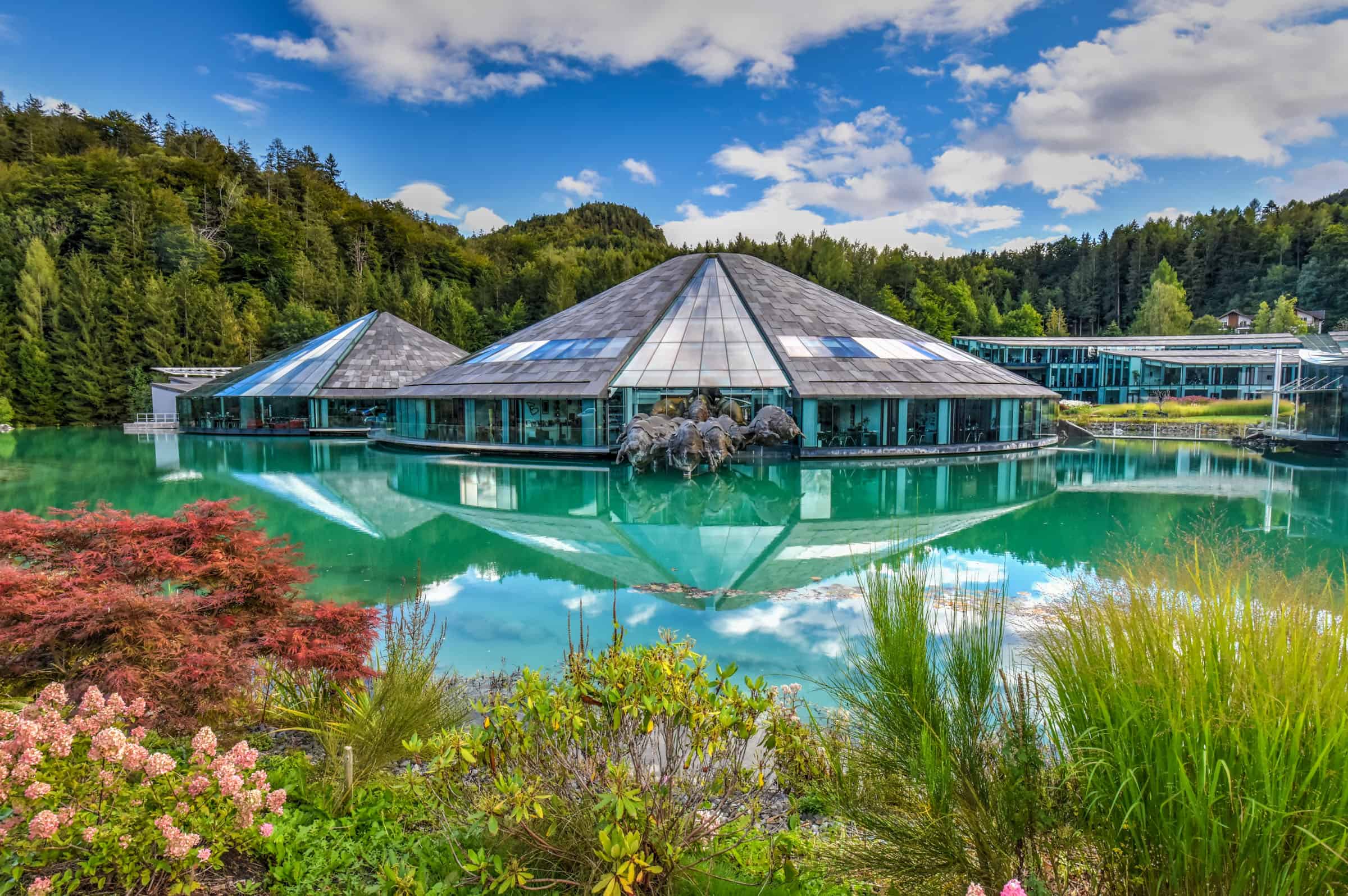
Best Things to See and Do in Salzburg
Most of the sites and attractions below are located within Salzburg’s old town (Altstadt), which itself is split into two by the Salzach River. The Altstadt portion that is south of the river is where you will find the majority of the historic attractions in Salzburg such as Hohensazlburg Fortress, Salzburg Cathedral, Mozart’s childhood home, and several of the main town squares. There are however several worthy attractions north of the river as well, such as the imposing Mirabell Palace and the historic Steingasse Street.
The Altstadt is also delimited by three of Salzburg’s small mountains (all of which feature forested nature walking trails): Mönchsberg and Festungsberg (on which Hohensazlburg Fortress is built) south of the river, and Kapuzinerberg, the tallest of the three, north of the river.
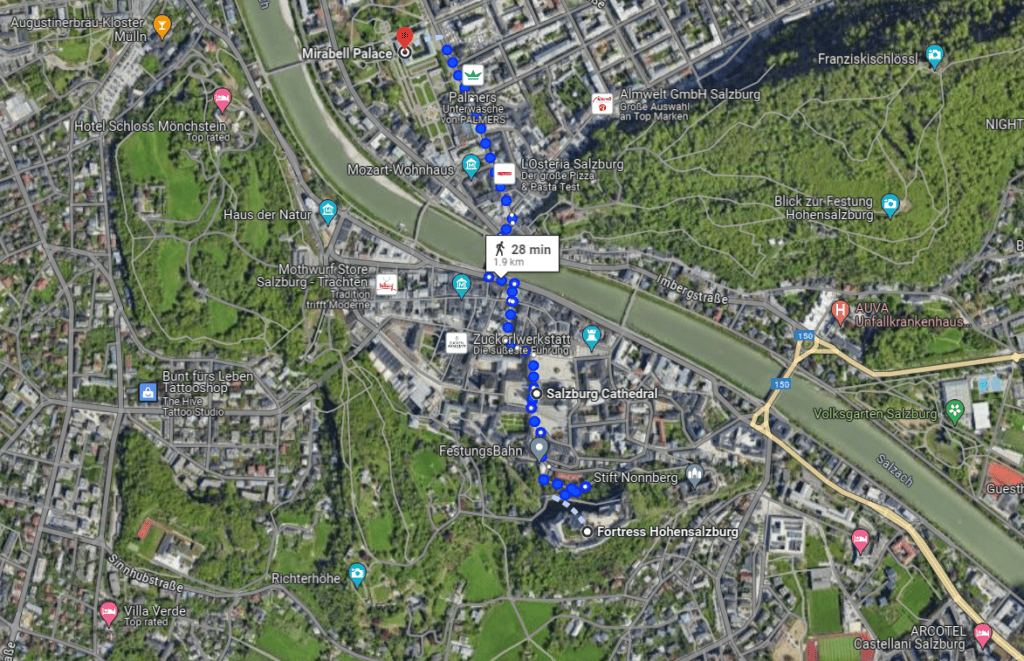
Salzburg is very walkable and, as seen in the map above, the two most distant main attractions at either end of the Altstadt are only a 30-minute walk from each other.
1- Altstadt: South of Salzach River
Visit Salzburg’s Imposing Castle (Hohensalzburg Fortress)
Hohensalzburg Fortress is built atop Festungsberg mountain, high above the rooftops of Salzburg’s Baroque historical district. The first iteration of the castle was built in 1077 to protect the Prince Bishops and the principality itself from attack. However, the castle never faced a true siege. Over the centuries it received various improvements and extensions until it roughly took its current appearance around 1500. Today the fortress is considered one of the best preserved medieval castles in Europe.





Hohensalzburg Shedule and Opening Hours
The fortress can be visited year-round:
January – April*: 9.30 a.m. – 5.00 p.m.
May – September: 8.30 a.m. – 8.00 p.m.
October – December*: 9.30 a.m. – 5.00 p.m.
* Reduce hours for the Christmas and Easter Holidays
Entry Ticket Options and Costs
There are 4 ticket options for visiting Hohensalzburg Fortress (2024 prices*):
1. Basic Pathway ticket – € 11,20
2. All-Inclusive Pathway ticket – € 13,60
3. Basic ticket with funicular – € 14,50
4. All-Inclusive ticket with funicular – € 18,00
*Reduced fares available for children
The Pathway Tickets require you to walk up to the castle (about a 5-to-10-minute walk along a steep uphill path with staircases). The path up starts next to the funicular station. The Pathway Tickets do however include the descent with the funicular.
The Basic Tickets include access to the castle grounds, the castle courtyards, the castle bastions, the castle chapel, the armory, the three castle museums, and the Panorama Tour. The All-inclusive Tickets include the Princely Chambers and the Magic Theater, in addition to all the attractions included in the Basic Tickets.
You don’t need to buy tickets in advance, but you will save time by avoiding the on-site queues. Tickets can be purchased on the castle website here. Twice a day during the summer, free 30-minute guided tours are offered (9:30 am, 7,00pm); no advanced booking is required.





The castle highlights for us were the city views from the castle bastions, the Panorama Tour (a self-guided tour of the castle with several interactive exhibits), and the Princely Chambers.
Other Important Castle Visit Information
– Dogs are welcome in the outdoor areas of the fortress when kept on a leash. Dogs are not allowed indoors. The wearing of a muzzle is obligatory in the funicular.
– Drone flights are forbidden.
– Wear proper footwear. There are lots of steps and steep ascents both in the castle and along the path to reach it.
– You should plan for at least two hours at the castle to allow enough time to see the majority of the attractions.






Salzburg Cathedral and Main Town Squares
Located roughly in the center of the old town is Salzburg Cathedral and its three adjoining town squares: Residenzplatz, Domplatz, and Kapitelplatz.
For many, the Salzburg Cathedral is very much the centrepiece of Salzburg and is an imposing tribute to the Early Baroque period. Although the very first cathedral was built in 767, it was repeatedly destroyed by several fires over the years, then rebuilt each time and eventually expanded. The version we see today was finally consecrated by Archbishop Paris Lodron in 1628.
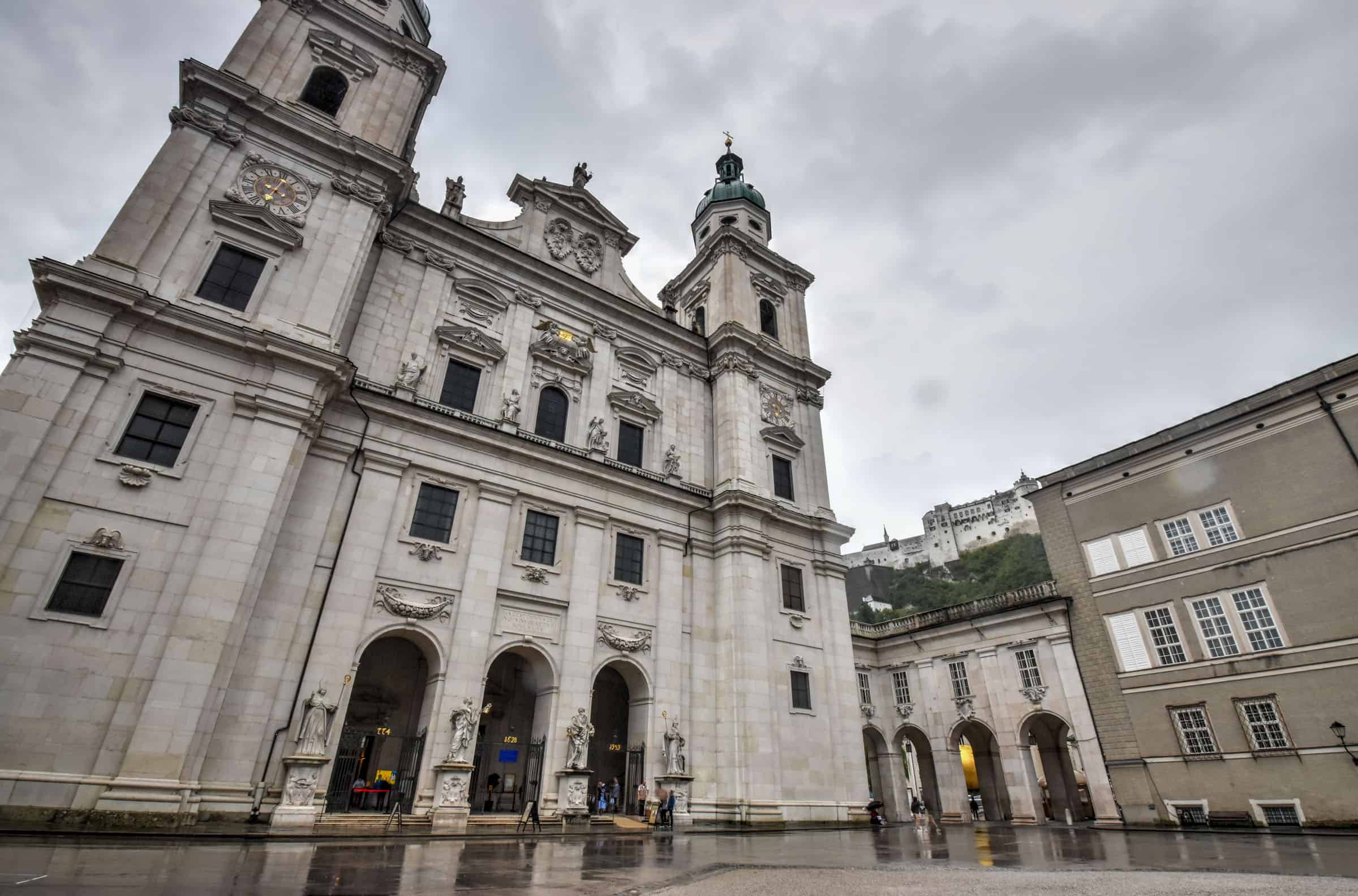
A conservation fee of € 5,00 is collected for visiting the church (children can visit for free). Audio guides are available for € 3,00. Guided tours (in German only) are offered every day at 2 pm (€ 9,00, 40 minutes). There is also a daily “Music at Lunchtime” organ musical show (€ 9.00). Tickets can be purchased in advance here. The cathedral is open to visitors throughout the year between 8.00 am – 5.00 pm from Monday to Saturday (Sunday 1.00 pm – 5.00 pm), with the closing time being extended to 6.00 pm March through October, and to 7.00 pm in August. For more information and up-to-date schedules, you can consult the Salzburg Cathedral website.



Residenzplatz is the largest of the three cathedral-adjacent squares, centred by the Residenzbrunnen fountain, which dates from the mid-17th century and is considered to be the most beautiful in the city. The square serves as the setting for St. Rupert’s Fair in September and a Christmas market during the Advent season. At the western end of the square is where you will find DomQuartier, one of Salzburg’s best museums. Although it only opened in 2013, it offers access to sections of Salzburg Cathedral and St Peter’s Abbey that were previously closed off to the public. For more information on visiting the museum, you can consult the Dom Quartier Salzburg website. A short hop from Residenzplatz is the smaller Mozartplatz, where you’ll find a statue of the city’s adored musical prodigy. The statue was erected in 1841 on the 50th anniversary of Mozart’s death.
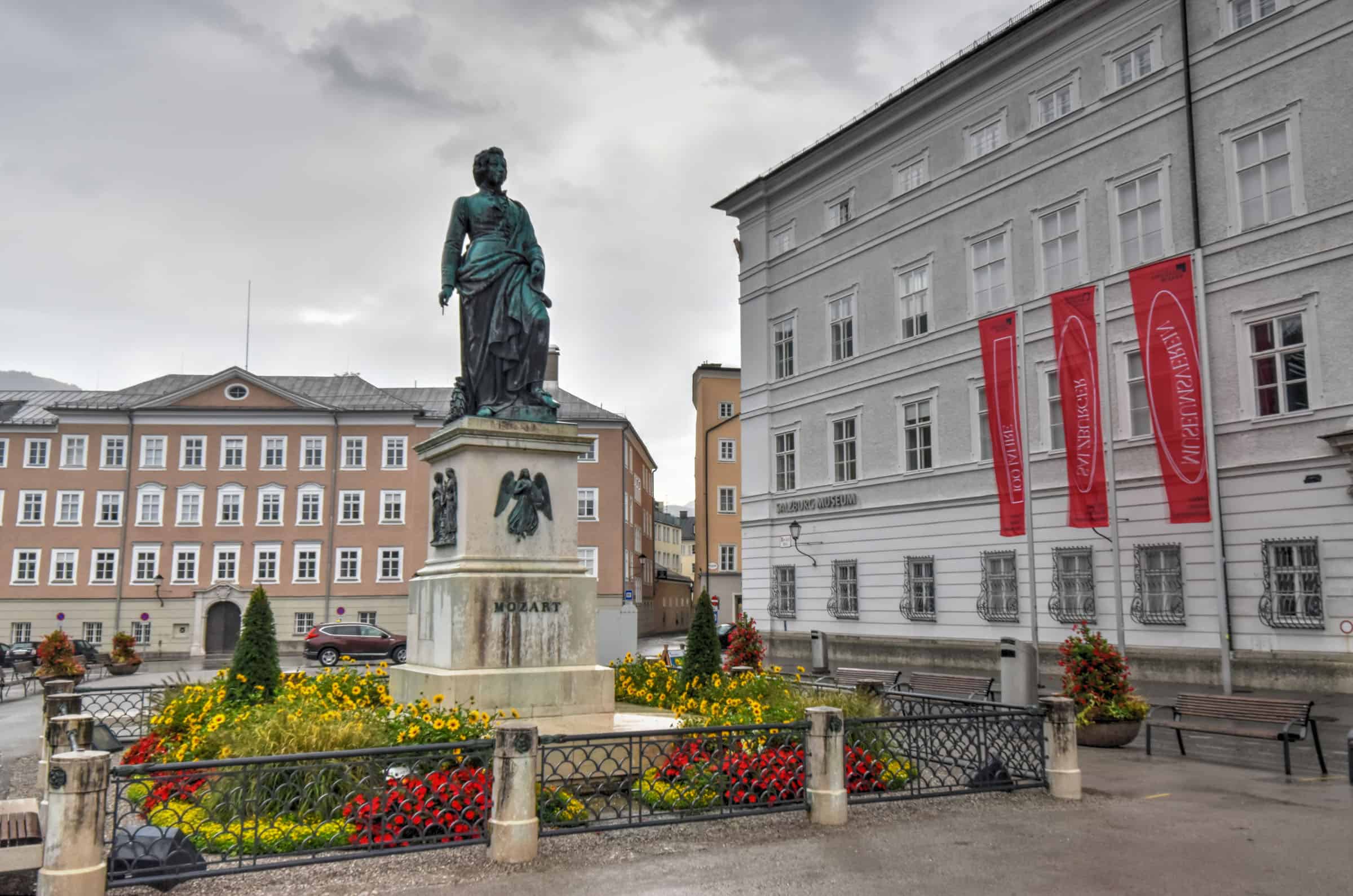
Domplatz, also known as the cathedral square, is the large area directly in front of the cathedral’s main entrance, where you will find the Statue of the Virgin Mary, which dates from the late 18th century. Kapitelplatz is another spacious square south of the cathedral where you can admire a great view of the imposing fortress above. The square is noted for its oversized chess pieces and Sphaera, a modern nine-meter-high artwork from 2007 featuring a male figure on a golden sphere. At the southern end of the square is the Kapitel Fountain, which originally served as a watering place for horses, and is decorated with the figure of the sea god Neptune.
If you would like to explore Salzburg and learn about its history without having to plan a detailed itinerary through the town, a good idea might be to sign up for one of several great walking tours through the city:
St Peter’s Abbey Church, Cemetery and Catacombs
St. Peter’s Abbey was founded in the 7th century and is considered the oldest monastery still in existence in the German-speaking world. The current Abbey Church was built in the 12th century and remodelled several times over the centuries, and today combines elements of Romanesque, Gothic, Renaissance, and Baroque styles of architecture.



St. Peter’s Cemetery (Friedhof St. Peter) is the oldest graveyard in Salzburg, dating from the late antiquity and early Middle Ages, and therefore predates Abbey. The cemetery grounds are quite impressive to see in person, with unique funerary monuments and crypts around the late Gothic Margarethenkapelle (St Margaret’s Chapel). Nestled in the St. Peter’s Abbey complex, the cemetery is the final resting place of many of Salzburg’s aristocratic families, as well as Maria Anna Mozart – Wolfgang Amadeus’ older sister. The catacombs, which are believed to date back to the 1100s, are located at the end of the cemetery and carved into the side of Mönchsberg Mountain (€ 2 for entry).
Both the cemetery and the church abbey are free to visit. The cemetery is accessible daily from 6.30 am – 8.00 pm (April – September) or from 6.30 am – 6.00 pm (October – March). The Abbey Church of St. Peter: is open daily from 8.00 am – 12.00 pm and 2.30 pm – 8.00 pm (no visits during mass). The Catacombs are open daily from 10.00 am-12.00 pm, 1 pm-5 pm (closing time extended to 6.00 pm from May to September).
Next to the cemetery, you’ll find Stiftsbäckerei St Peter, Salzburg’s oldest bakery which has been in operation for over 700 years, and the old water wheel that was used to power the abbey’s mill.
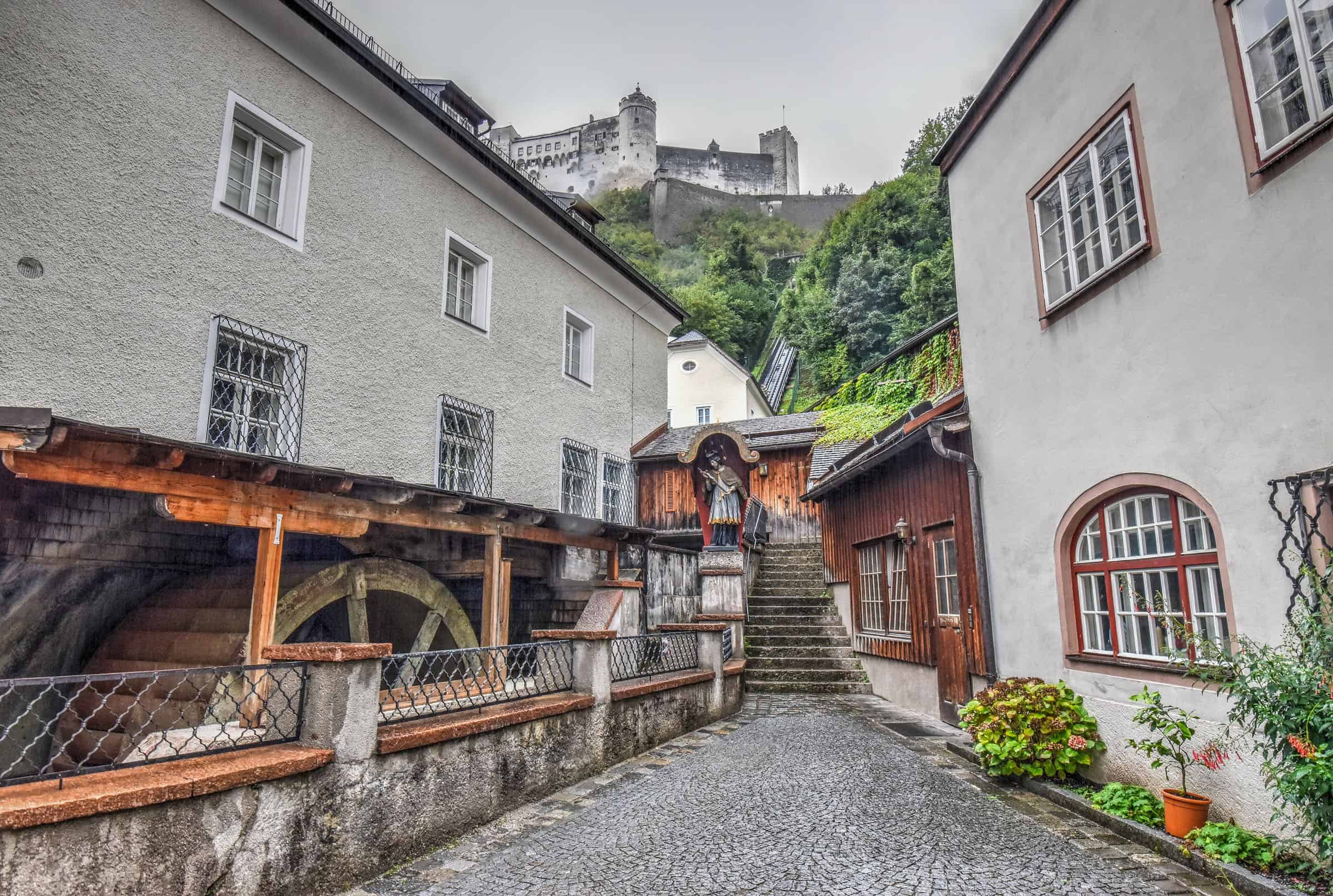
Discover the Streets of the Old Town (Altstadt)
The best way to truly appreciate the beauty of Salzburg is by somewhat aimlessly wandering through its streets, alleyways and plazas, to let its beautiful baroque architecture and rich history sink in. Along the way, you will cross many museums, cafes, shops and restaurants.
The main shopping drag and the bustling heart of Salzburg’s Old Town is Getreidegasse Street, which is also curiously where you will find Mozart’s childhood home (more on this historic attraction below). You’ll find international fashion chains, traditional shops and a broad range of dining opportunities along the street. Most of the stores here have unique signs on their facades, making the street really picturesque
Alter Markt (“old marketplace”) is a small square enclosed by a row of stately townhouses, whose core often dates back to the Middle Ages. In fact, the square was already laid out as an urban trading center and marketplace in the 13th century. There are a few interesting finds around the square: Salzburg’s smallest house, the pastry shop Café-Konditorei Fürst (where the Mozart ball (Mozartkugel) was first invented, Café Tomaselli (Austria’s oldest café), and Fürsterzbischöfliche Apotheke (at over 400 years old is the oldest still existing pharmacy in Salzburg).
A short walk from Alter Markt is Universitätsplatz, another small square that is home to today’s daily outdoor marker known as Grünmarkt, where you will find a variety of fresh produce, farm products, confectionaries, baked goods and spirits. The market is open Mon-Fri 7.00 am- 7.00 pm (and Saturdays 6.00 am – 3.00 pm).
Get a Glimpse into Mozart’s Life and Upbringing
On busy Getreidegasse Street is where you will find Mozart’s birthplace (Mozart’s Geburtshaus), the house in which he was born (in 1756) and raised. His family lived here for 26 years, and Mozart lived with his two parents and his sister during his early childhood. The house has been a museum since 1880 and is today filled with a treasure trove of tidbits, portraits, exhibits, and memorabilia about Mozart’s life. The museum allows you to take a self-guided tour through several original rooms, and there’s so much information available that you should plan at the very least for half an hour if not more. Open daily 9.00 am – 5.30 pm (€ 13.50 for adults). We recommend visiting early or late in the day if possible as it can get quite crowded during midday and the apartment is fairly small.



In 1773, the family moved to a much more spacious house known as the Mozart Residence, which you can also visit (located on Makartplatz Square north of the river, near Mirabell Palace), and lived there until 1787 (Mozart himself left the house to move to Vienna in 1781. The house is not exactly the original house that Mozart lived in – most of it was destroyed in an air raid during WWII and an office building was eventually constructed over the site of the ruins. This building was later demolished in the early 1990s and the Mozart Residence was reconstructed true to the original building plans. Open daily 9.00 am – 5.30 pm (€ 13.50 for adults).
If you’re short on time and can only visit one of these houses, we recommend focusing on Mozart’s childhood home birthplace (generally referred to as Mozarts Geburtshaus or Hagenauerhaus).
Salzburg Card
If you plan on visiting several of the attractions described above within a single day or over the course of a few days, you may want to consider getting the Salzburg Card. You can purchase the card online and use it on your phone. The card can be valid for 24 hours (€ 31,00), 48 hours (€ 40,00) or 72 hours (€ 46,00), and the clock starts when you first use it – meaning that if you activate it at noon, it will be valid until 11:59 am the following day. The card is half-price for children and costs slightly less outside of the May – October high season.
The card provides free entrance (only one entry per attraction) to multiple attractions throughout Salzburg, including but not limited to Hohensalzburg Fortress, St Peter’s Abbey, Hellbrunn Palace (described below), Salzburg City Cruises, DomQuartier Museum, Mozart’s Birthplace & Mozart’s Residence, in addition to unlimited use of Salzburg’s public transit system during the card’s validity period.
A Boat Tour Along the Salzach River
Another great way to discover Salzburg while relaxing is with a boat tour along the Salzach River. It provides you with a great opportunity to view the city from a different perspective while allowing you to rest your legs and enjoy the scenery in comfort. Several tours are available:
Grab a Drink at Augustiner Bräustübl Mülln
Probably the most festive place to grab a drink in Salzburg, beer has been brewed and enjoyed at monk-founded Augustiner Bräustübl Mülln brewery since 1621. The brewery is an offshoot of the Munich-run brewery that is Germany’s oldest, dating from 1328. Although it’s about a 15-20 min walk northwest from most of the other old-town areas of interest, its tree-covered vast 1400-seat beer garden makes it the ideal place to unwind and relax after a day of exploring. If the last place you visit before visiting the brewery is the Hohensalzburg Fortress, several walking paths run through the scenic and relaxing forests of Mönchsberg Mountain to reach the brewery, with several viewpoints of the city along the way.
Listen to the Nuns Sing at the Nonnberg Abbey
Twice a day (6:45 am every morning, 5:15 pm on weekdays, 5 pm on Saturdays, 4:30 pm on Sundays) you can listen to nuns chanting Gregorian chorales at one of Europe’s oldest working abbeys. Founded by St Rupert, patron saint of Salzburg back in 715 CE, the Benedictine abbey is off-limits apart from its rib-vaulted church, where you can admire beautiful Romanesque frescoes. The Nonnberg Abbey (Stift Nonnberg) is close to the Hohensalzburg Fortress.
2- Altstad: North of Salzach River
Mirabell Palace
The main attraction north of the Salzach River is no doubt Mirabell Palace & its stunning Gardens. Although today the palace houses the offices of the Salzburg mayor and city council members, it was Prince-Archbishop Wolf Dietrich von Raitenau who had the palace (originally called Schloss Altenau) built in 1606 for his mistress Salome Alt and their 15 children.
Two attractions are open to the public (free): the Angel Staircase in the front entrance (open Mon-Sat, 8.00 am – 6.00 pm) — this is where you might remember Julie Andrews and company practicing “Do-Re-Mi” in The Sound of Music) and Marble Hall (Monday, Wednesday, Thursday 8 am-4 pm, Tuesday and Friday 1 pm-4 pm / no visits during special occasions – it is considered one of the finest wedding and concert halls in the world, and also hosts conferences and awards ceremonies). If you are interested seeing a Mirabell Palace classic music concert in the historic Marble Hall, you can purchase tickets here (from €39.00 per person (2024)):
The true pièce de résistance of Mirabell Palace for many is its stunning baroque Mirabellgarten, which was reshaped around 1690 according to plans drawn up by architect Johann Bernhard Fischer von Erlach and the characteristic geometrical shapes of the Baroque style are still recognizable today. The gardens are generally accessible from 6.00 am until dusk. The garden features many attractions such as Pegasus Fountain, the Dwarf Garden and the Hedge Theater.
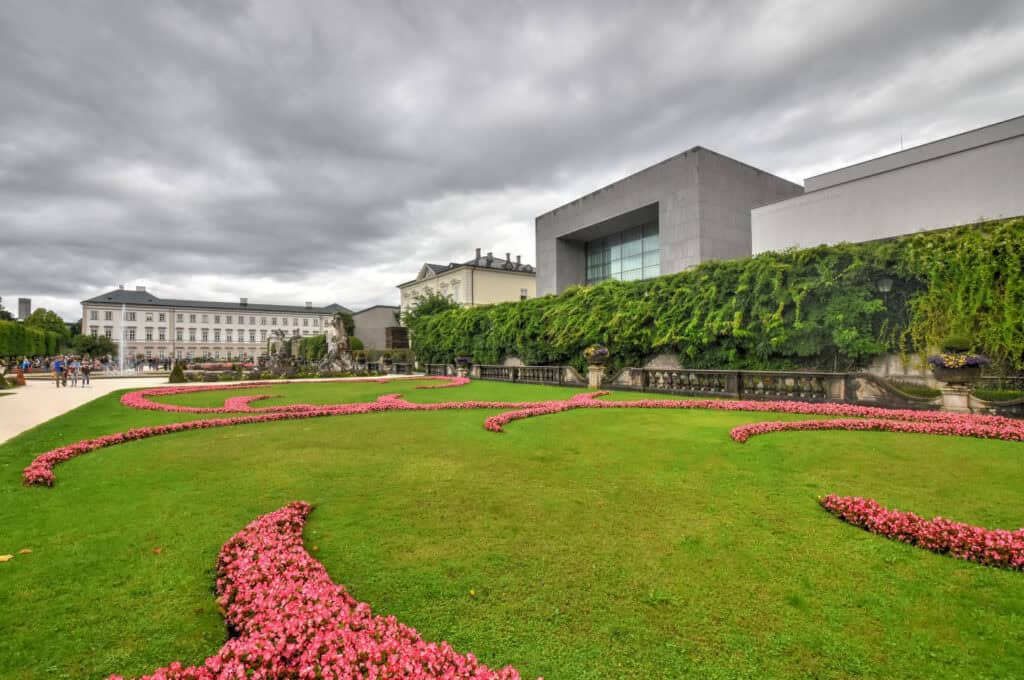
A Stroll Along the Riverside Promenade
Technically, there are promenades on both sides of the river, but we find the view more spectacular from the northern side, with the imposing fortress as the backdrop to the south. You can easily walk as far as you would like and cross the river as many times as you would like to as well, as several pedestrian bridges connect both sides of the old town, such as Müllnersteg, Marko-Feingold-Steg (adorned with countless colorful padlocks), and Mozartsteg (art nouveau pedestrian bridge known for its appearance in 1965’s “The Sound of Music”), each of which offers beautiful views of the city. In fact, you can create an easy riverside loop by walking along one riverside, traversing Müllnersteg, then walking along the other riverside and then crossing Mozartsteg to return to your start point in about 30-35 minutes.





Linzergasse & Steingasse
Two streets worthy of your attention north of the river are Linzergasse & Steingasse. Linzergasse is a vibrant shopping street and the main pedestrian artery through Salzburg’s old town north of the river, one where you’ll find artisan shops, trendy cafés and renowned restaurants. The street dates back to Roman times and for centuries served as the main thoroughfare into town for travellers from Linz and Vienna.




Whereas Linzergrasse runs perpendicular to the river, Steingrasse runs parallel to the river at the foot of Kapuzinerberg mountain. Historically, the street was the most travelled road into the mountains, and to Italy beyond, making it one of the most vital north-south routes for medieval commerce. To take advantage of the passing traffic, several local artisans and merchants set up shop along the narrow city street. Nowadays, however, the street is mostly residential homes with a few shops in this street, but it’s fun to imagine the daily chaos that used to occur on such a narrow street.
Enjoy the city views from Kapuzinerberg
After a brief exploration of Steingasse, the street is also the ideal starting point for a walk up Kapuzinerberg mountain. We suggest following this path, which starts with the staircase up Imbergstiege road from Steingasse, and then veers onto Stefan-Zweig-Weg, all the way up to the main viewpoint; the walk up should take about 25-30 minutes. This path is paved the entire way, but there are several other unpaved paths that you can take to further explore the mountain and other viewpoints, several of which go even higher up the mountain. At the very top, there’s a small castle (close to the public) but with a small café serving drinks and snacks.
St. Sebastian’s Cemetery
The original church in this location was built between 1505 and 1512. In the 18th century, the building had become derelict, was demolished and replaced by a hall church reflecting the style of the Late Baroque. The true highlight of a visit here is the church’s cemetery (Friedhof St Sebastian), which was designed in the style of an Italian campo santo in the late 16th century. Members of Salzburg’s most prominent families as well as famous personalities found their final resting place amid the cemetery’s magnificent arcades. While Mozart’s sister was buried in St Peter’s cemetery, his wife’s and father’s remains are located here in St. Sebastian’s Cemetery. The cemetery is free to visit and open to the public daily from 9 am-4 pm (summer: until 6:30 pm).



3- Outside of the old town
Red Bull’s Hangar-7
Hangar-7 is a unique aircraft hangar owned by Red Bull co-founder Dietrich Mateschitz, located near Salzburg airport. The hangar’s architecture is quite unique and impressive – it was built as a giant glass dome or shell-shaped structure intended to function as an events venue, designed to bring together arts, aviation and the culinary arts. Hangar-7 is home to a collection of historical airplanes, helicopters, Formula One racing cars, and various rotating exhibitions of other vehicles, in addition to hosting the Michelin-starred restaurant Ikarus, two bars and a lounge.
Hangar-7 is free to visit and is open Monday-Saturday 9 am-10 pm, Sunday 9 am-5 pm (Closed during the Christmas holiday season).
Hellbrunn Palace (Schloss Hellbrunn)
Situated slightly outside the city center (about a 10-minute drive or 25-minute bus ride south), Hellbrunn Palace is worth including in your Salzburg sightseeing itinerary if you have at least two days in the city or somewhere nearby. This impressive Baroque palace took only three years to build, from 1612 to 1615, which was exceptionally fast for the early 17th century.
As impressive as the palace is, the main draw here is the immaculately maintained garden and its “surprising” fountains. The gardens are not only filled with stunning and intricate water fountains but they hide within them several trick fountains that only shoot out water once in a while to surprise the unsuspecting visitor! The trick fountains were conceived by Prince-Archbishop Markus Sittikus (the same man behind the palace’s construction) and intended as a series of practical jokes to be performed on guests.









There’s also a water-powered mechanical theatre built in 1750 with nearly 200 moving wood carvings, beautifully landscaped gardens, a large playground for children, and the famous gazebo where certain scenes of The Sound of Music were shot.
Visits of the Hellbrunn Palace and Trick Fountains are done via two separate audioguides (gardens and trick fountains, 50 min; palace, 40 min).
Hellbrunn Palace and Trick Fountains are open from late March until early November:
March, April: 9:30 am-4:30* pm
May, June: 9:30 am-5:30* pm
July, August: 9:30 am-6:30* pm
September: 9:30 am-5:30* pm
October, November: 9:30 am-4:30* pm
(*last admission)
Admission Tickets cost € 15.00 (or free with your Salzburg Card). Otherwise, tickets can be bought on-site or pre-booked online (but reservations are not necessary). Reduced rates are available for children and students.
Sound of Music Tours
If you are a fan of the movie, several great organized tours will take you to locations used in “The Sound of Music” movie, often combining sites in Salzburg and the nearby countryside:
When to Visit Salzburg
In all honesty, Salzburg is one of those cities that can be visited year-round. Like many places the crowds peak in July & August, so if you want to enjoy comfortable weather with fewer tourists we highly recommend the shoulder season: May, early June, September and October. The holiday season can also be a beautiful time to visit Salzburg with the Christmas markets popping up and perhaps a light snow dusting to add to the festive atmosphere.
But regardless of when you decide to visit, there will always be plenty of things to see and do as very few attractions close throughout the year (including during the winter).
How Long Do You Need in Salzburg
Ideally, you should try to spend at least one full day in Salzburg, which should allow you to see most of the city’s attractions, but two days are better for getting a better feel for the city and not rushing through any of the sightseeing.
If you want to stay longer and are looking for additional things to do, you might be interested in the Museum of Modern Art, Museum of Natural History, Museum of Natural History and Technology, Salzburg Zoo Hellbrunn, the Botanical Garden, Leopoldskron Palace, and the Salzburg Christmas Museum. Also, there are tons of great day trips you can take from Salburg (see next section).
Where to Stay in Salzburg
These are in our opinion some of the best mid-range accommodation options in Salzburg:
Master Mirabell (New Town) – Recently renovated apartment near Mirabell Palace
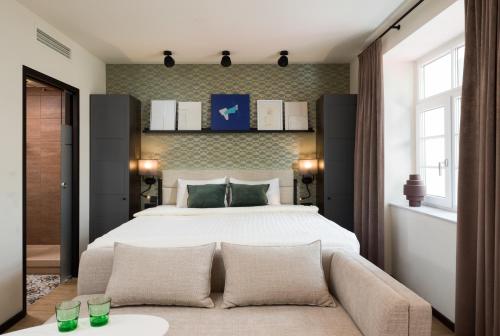
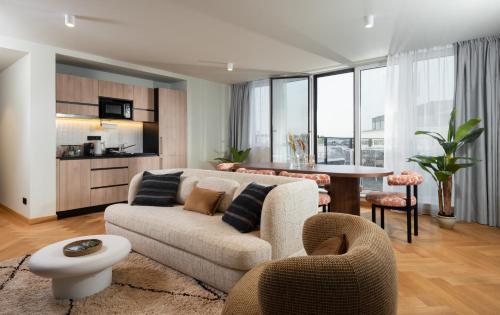
Arte Hotel Salzburg (New Town) – Built in 2019, it offers a breathtaking view of the historic city centre and the surrounding area.
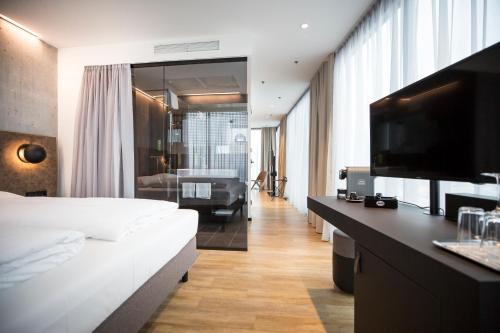
Cocoon Salzburg (New Town) – Elegant modern rooms in the heart of the historic center


Radisson Blu Hotel Altstadt (Old Town) – Stay in a historic building from 1377

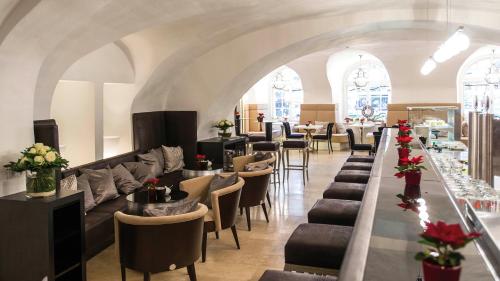
Hotel Sacher Salzburg (Old Town) – Historic hotel located along the scenic Salzach River

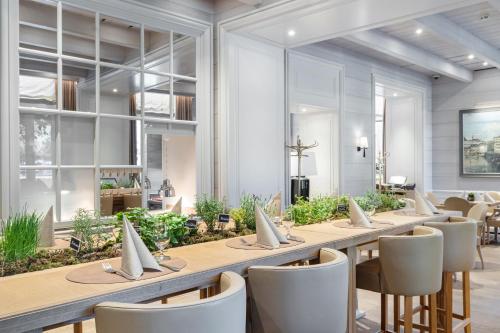
Day Trips from Salzburg
There are so many great day trips you can take from Salzburg, including visiting one of several salt mines in the area (if you are not familiar with salt mines, visiting them is a lot more fun than it sounds), one of the two ice caves in the area, one of the many lakes in the Salzkammergut region (such as Mondsee, Wolfgansee, Atterssee, and Traunsee), beautiful lakeside villages of Hallstatt and St Wolfgang, stunning medieval castles, great alpine hiking destinations, and so much more.








For more information on the many day trip options from Salzburg, you can check out our travel guide on some of the Best Day Trips From Salzburg.
You might also be interested in our Salzkammergut Road Trip Itinerary travel guide, highlighting how to spend up to 7 days in the area.
Road Trip Ideas from Salzburg
Coming Soon.
Planning a Trip to Austria?
You might be interested in these pages (coming soon):
Best Things to See and Do in the Salzkammergut
Perfect Road Trip Itinerary in the Salzkammergut
Best Things to See and Do in Salzburg
Best Things to See and Do in Hallstatt
We also highly recommend these guidebooks:
Rick Steves Vienna, Salzburg & Tirol
Lonely Planet Austria
Photography Gear
If you like our photography, you might be interested in some of the gear we use to shoot our travel and hiking destinations.
Camera Body – Nikon Z 6ii Fx-series Mirrorless Body
Main Lens – NIKON 24-120mm F/4G ED VR AF-S
Zoom Lens – Sigma 745-306 150-600mm f/5-6.3
Polarizing filters – Urth Circular Polarizing (CPL)
Camera Tripod – K&F Concept 64-inch Camera Tripod
Mini-tripod – Lammcou Flexible Camera Tripod
Camera/hiking backpack – Vanguard Alta Rise 48 Backpack
Universal Travel Adapter – VYLEE Universal International Power Travel Plug
Other Travel Essentials
Travel Insurance
SafetyWing is a travel insurance company that offers comprehensive coverage for travellers. Includes Medical Insurance and Travel Insurance. Primarily geared towards long-term travellers, digital nomads, and expats.
e-Sim cards
Airalo is the world’s first and largest eSIM store with eSIM plans for 200+ countries and regions worldwide. With Airalo eSIMs, travellers can get connected the moment they land at their destination and avoid nasty data roaming charges
eSIMS are a sustainable alternative to single-use SIM cards – they are 100% digital, require less energy to produce and be re-used rather than disposed of.
Car Rentals
Discover Cars is our go-to website for car rentals. We almost always find our preferred rate there.
Transfer from Airport
Welcome Pickups is our favourite private transfer service, which you can pre-book at a fixed price. Currently available in 220 cities all over the world (mostly in Europe, but with several major cities in Asia, the Middle East and the US).
Kiwitaxi is another private transfer service – we haven’t tried it yet, but it’s currently available in a few more countries (102 as of 2024).
Hotels and Accommodations (coming soon)
Photography Prints
If you found this blog useful, you can help support our blog by purchasing low-cost digital prints. Printed physical prints are also available for purchase.








—–
Well, that wraps it up! We hope you enjoyed our Guide to the Best Things to See and Do in Salzburg and that it will prove useful for planning your trip.
—–
You might also be interested in these related pages:
